Best Things to Do in Hauts-de-France Region
Article written by Elisa This article may contain compensated links. Please read disclaimer for more info.
Hauts-de-France is the northernmost region of France, formed by the merging of the historical regions of Picardy and Nord Pas de Calais . It is bordered by the English Channel, the Northern Sea, Belgium, and the French regions of Grand Est, Normandy , and Ile-de-France.
What is Hauts-de-France famous for? It is a region of awesome cathedrals, belfries, castles, and World War sites but it is also a land of wide-open spaces, wild coasts, and beautiful countryside.
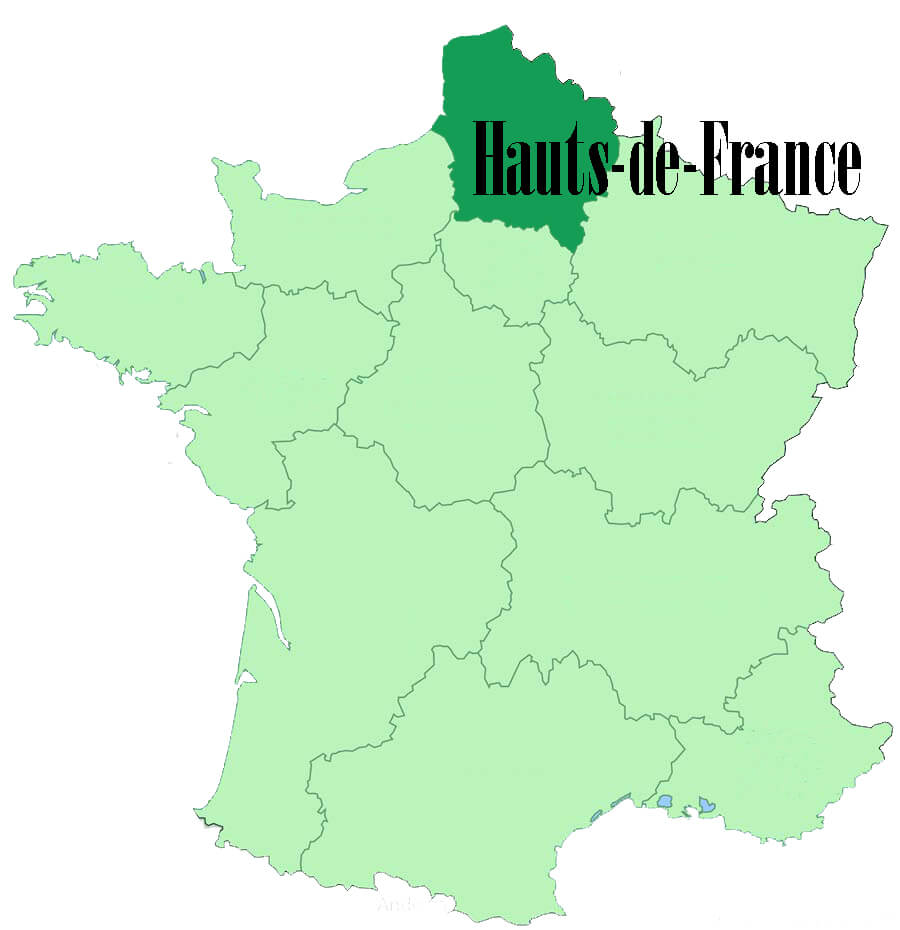
Thanks to the excellent ferry connection Dover-Calais, the Hauts-de-France region is Great Britain’s main gateway to France, and British road-trippers will find in this region many great excuses to stop for a break on the way to Paris and the south.
Its proximity and good train connections with the French Capital, make of Hauts-de-France also an attractive region to explore on day trips from Paris by train.
The capital of Hauts-de-France is Lille and the region is divided into five departments: Aisne, Nord, Oise, Pas-de-Calais, and Somme . There are so many things to do in Hauts-de-France that you cannot miss this wonderful region when visiting Paris or the north of France!
Related posts
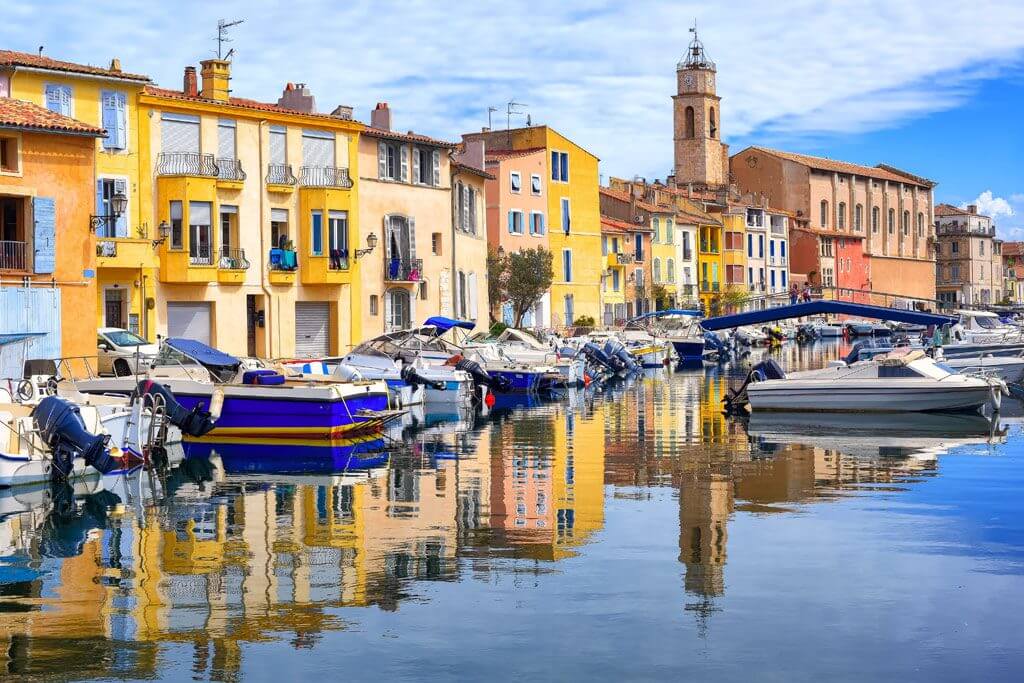

Hauts-de-France Travel
BY PLANE: The region has one of the busiest international airports in France : Beauvais-Tillé Airport (BVA). Also known as Paris-Beauvais , the airport offers low-cost flights by Ryan Air from cities like Manchester, Dublin, or Girona. Paris-Beauvais is a popular option for travelers wishing to visit Paris on a budget.
Book your flight tickets to Paris-Beauvais
BY TRAIN: Traveling around France by train is straightforward. Lille is on the Paris-Brussels-London high-speed rail corridor and it is well connected to these cities. Paris-Lille is only a 1-hour 20 min ride, London St Pancras-Lille is a 1-hour 20 min ride with some trains stopping also at Calais, and Lille-Bruxelles is only a 30 min ride.
Book your train tickets to Hauts-de-France
BY FERRY. Calais is connected to Dover in England by ferry services operated by P&O Ferries and DFDS Seaways (1 hour 30 min). DFDS also operates ferries between Dover and Dunkirk.
Hauts-de-France by Car
For extended trips in the Hauts-de-France region, the best way to get around is by car. This region is a great place for memorable French road trips . With a car, some good tunes, and the best company, you are set for one of the best adventures in your life. Driving in France is very easy, and with the car, you can go off the beaten path to visit small villages and lesser-known sites.
Recommended road trips in Hauts-de-France:
- Road Trip from Calais to Paris
- Road Trip in Northern France from Paris
If you don’t have your car, we recommend booking in advance through platforms like Discover Cars . This site takes all major rental companies, such as Hertz, Avis, etc., and compares prices for you. Check out our best tips for renting a car in France .
Browse Car Rental Companies Available in Hauts-de-France
Best Places to Visit in Hauts-de-France
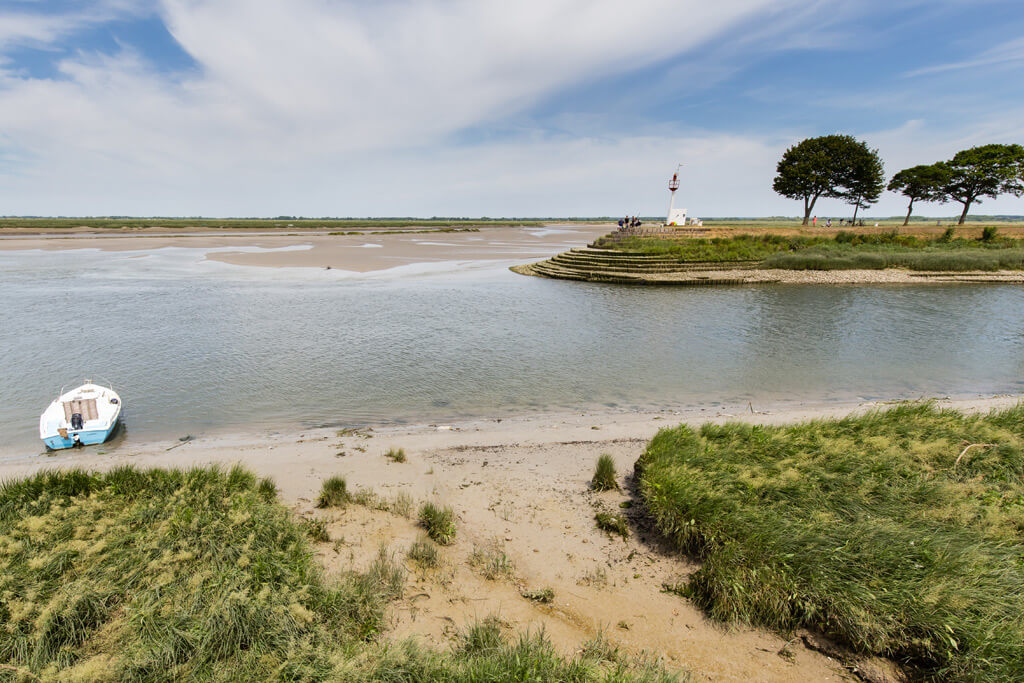
Let’s explore the best things to do in Hauts-de-France and the best places to visit in the region. The list of Hauts-de-France tourist attractions includes sightseeing, wild beaches, lots of architecture, and history.
1. Lille, the Capital
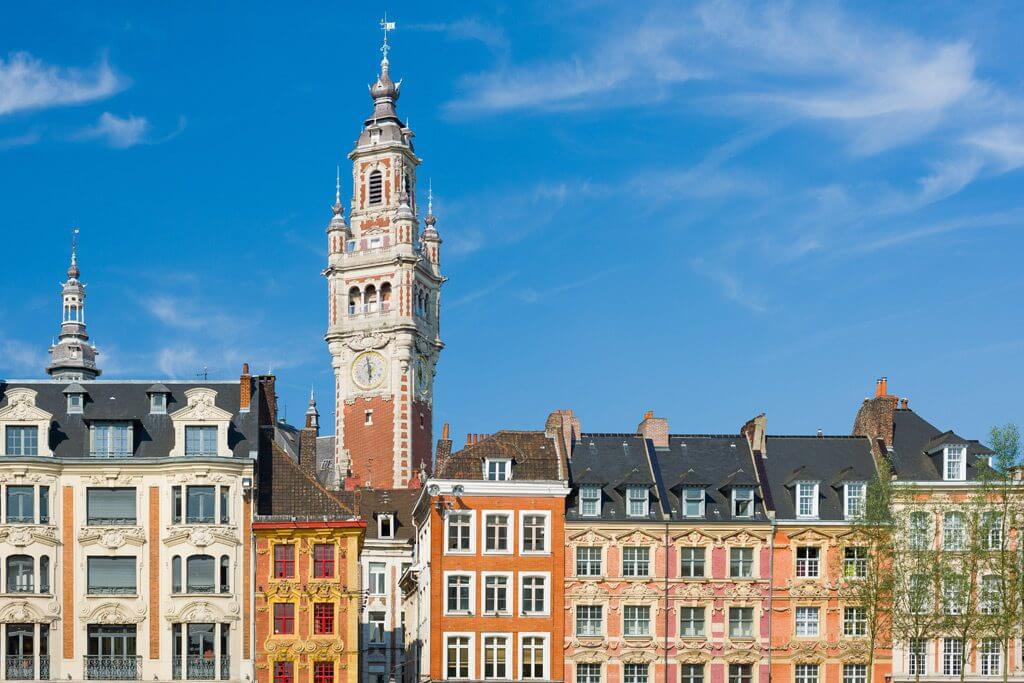
Lille is the capital of Hauts-de-France and an attractive cultural hub with a large student population. The city lies on the Brussels-Paris-London train connection, and all the TGV and Eurostar trains stop in Lille.
In the middle ages, Lille was part of the County of Flanders, and it was a prosperous fair town. Many Flemish influences remain from that period, especially in the city’s architecture and gastronomy.
Vieux Lille is the city’s historical center, characterized by 17th-century brick townhouses and cobbled pedestrian streets. Vieux Lille’s beating heart is the Grand Place, a beautiful and large central square.
Other interesting sights in Lille are Le Palais des Beaux-Arts , the Old Stock Exchange , the Citadel designed by Vauban, and Musée de l’Art et de l’Industrie de Roubaix (in the outskirts) with its beautiful Art Déco swimming pool. All these sites are included in Lille’s City Pass (24 or 48 hours), a museum + transportation card that makes you save money!
Its direct and fast train connection with the French capital (only 1 hour by TGV) makes Lille an attractive destination for a day trip from Paris by train . We recommend, however, spending at least a couple of days in Lille, using it as a base camp for visiting other sites in Hauts-de-France.
Here’s a selection of wonderful hotels in Lille
2. Les Grandes Cathédrales in Picardy
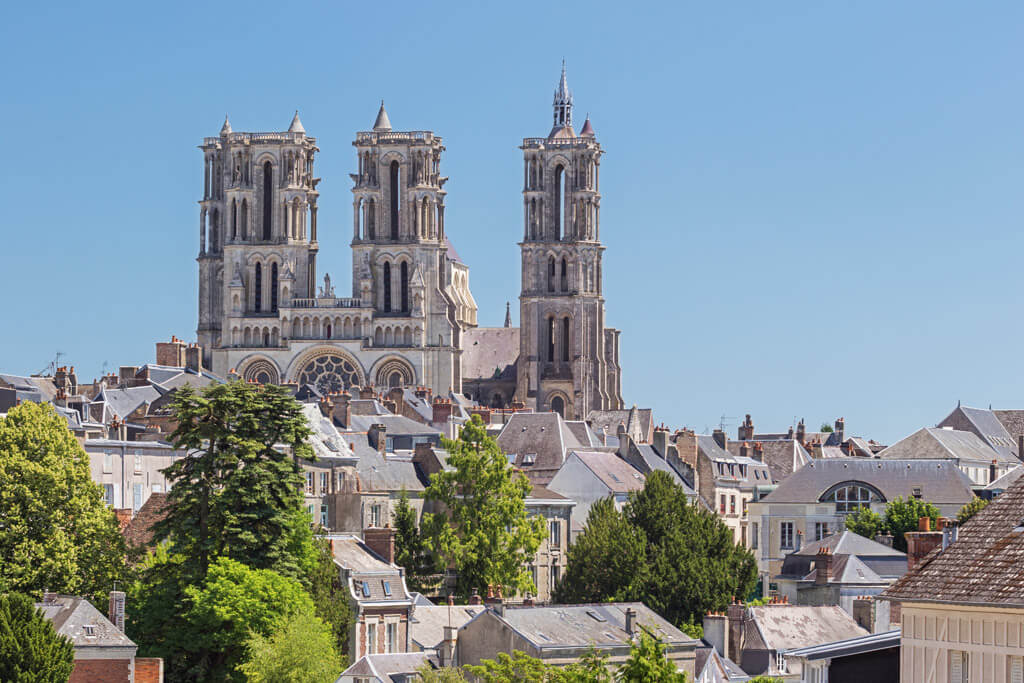
The Hauts-de-France region, and more specifically the historical region of Picardy, is probably the region with more awesome gothic cathedrals per square meter in the world!
The first Gothic buildings appeared around 1130-1150 in Île-de-France and especially in Picardy. At that time, demographic growth (linked to agricultural and commercial development) required an increase in the size of religious buildings. This was the perfect moment to try new techniques that allowed higher constructions with more natural light and wider spaces.
The best places to visit in Hauts-de-France for cathedral lovers are Laon, Amiens, Beauvais, and Soissons. From Laon Cathedral to the Cathedrals of Amiens or Beauvais , visitors can witness the main steps of the evolution of Gothic architecture in France. Today, all these Gothic Cathedrals in France are listed as UNESCO World Heritage, and they are surrounded by charming historical centers.
We recommend spending a least one night in the historical centers of Laon or Amiens to soak up its particular ‘lost in time’ atmosphere when day-trippers leave.
3. The Côte d’Opale
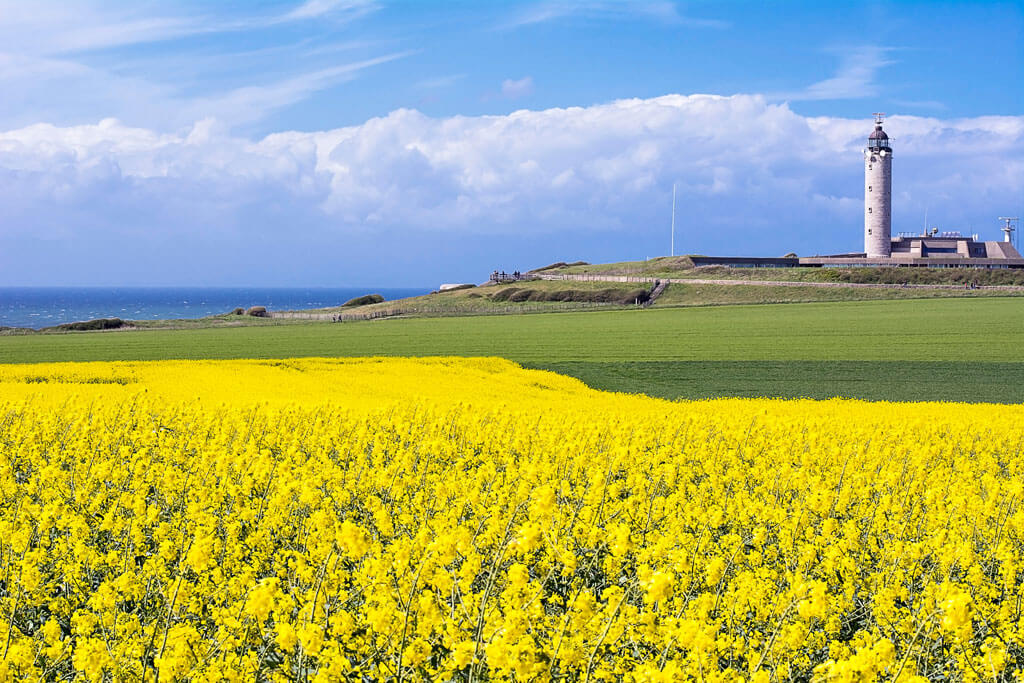
If you are wondering what to do in Hauts-de-France for a relaxing holiday, head to the Côte d’Opale on the English Channel.
The Côte d’Oplale (Opal Coast) is one of the most beautiful places to visit in Hauts-de-France. Stretching from the Belgian border to the river mouth of Somme, the Côte d’Opale reveals sublime landscapes of dunes, picturesque seaside villages, rugged chalk cliffs, green meadows, and pine forests.
The beaches of the Côte d’Opale are among the most beautiful beaches in France, offering visitors days of relaxation, shore fishing, water sports, and more.
Don’t miss Cap Gris-Nez – explored from the top – , and Cap Blanc-Nez – perfect for beach walks during the low tides. Go to see the seals at Baie d’Authie – on sunny days and low tides – and enjoy the superb sunsets of Plage de Berk .
Montreuil-sur-Mer is a picturesque fortified town located about ten kilometers inland while Wimereux and Ambleteuse are two seaside resorts that have been welcoming British tourists since the Victorian era.
4. Chantilly
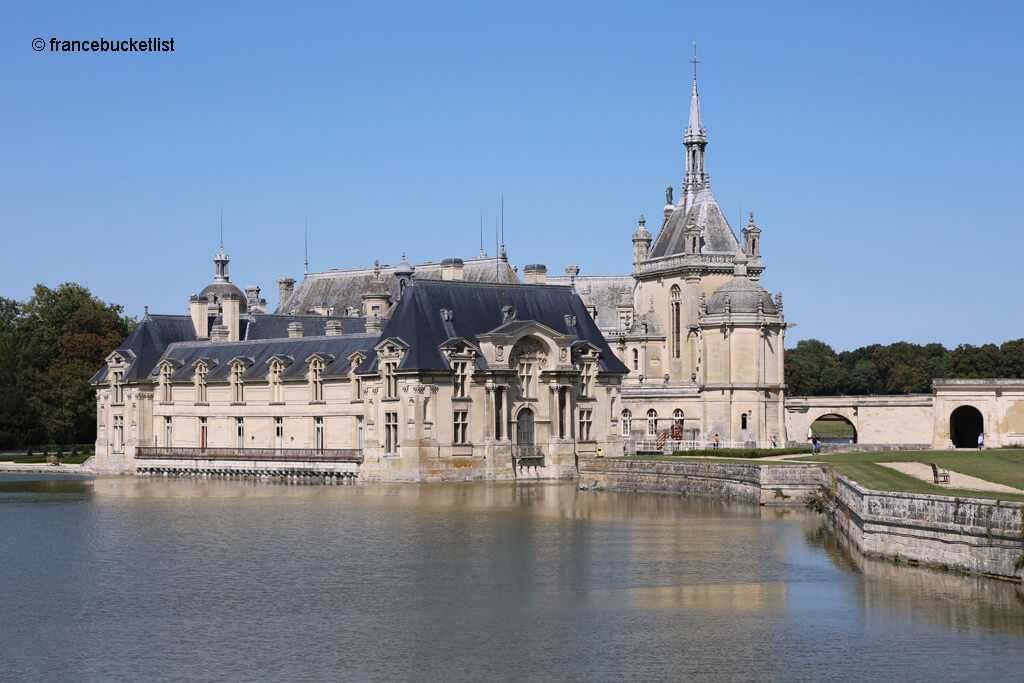
Chantilly , in the Oise department, is the horse capital of France. It is also home to a beautiful château and the birthplace of crème chantilly. It is one of the easiest day trips from Paris by train for a day of culture and relaxation.
Built in the 17th century, Les Grandes Ecuries (the Grand Stables) could host 240 horses and 500 hounds. Since then, Chantilly’s world has turned around horses, and it is home to France’s largest racehorse-training community. Today, Les Grandes Écuries hosts the Horse Museum and a prestigious center of dressage for the best horses in the world.
Château de Chantilly is one of the most beautiful castles near Paris and a great alternative to the busy Versailles Palace or Château de Fontainebleau. It was built in the 16th century for the House of Montomercy and later it was owned by the Princes of Condé, cousins of the King of France. The château has a beautiful library and an important collection of French artwork. The surrounding gardens were designed by Le Notre, the same landscape designer that created Versailles Gardens.
5. Grand’ Place and Petite Place in Arras
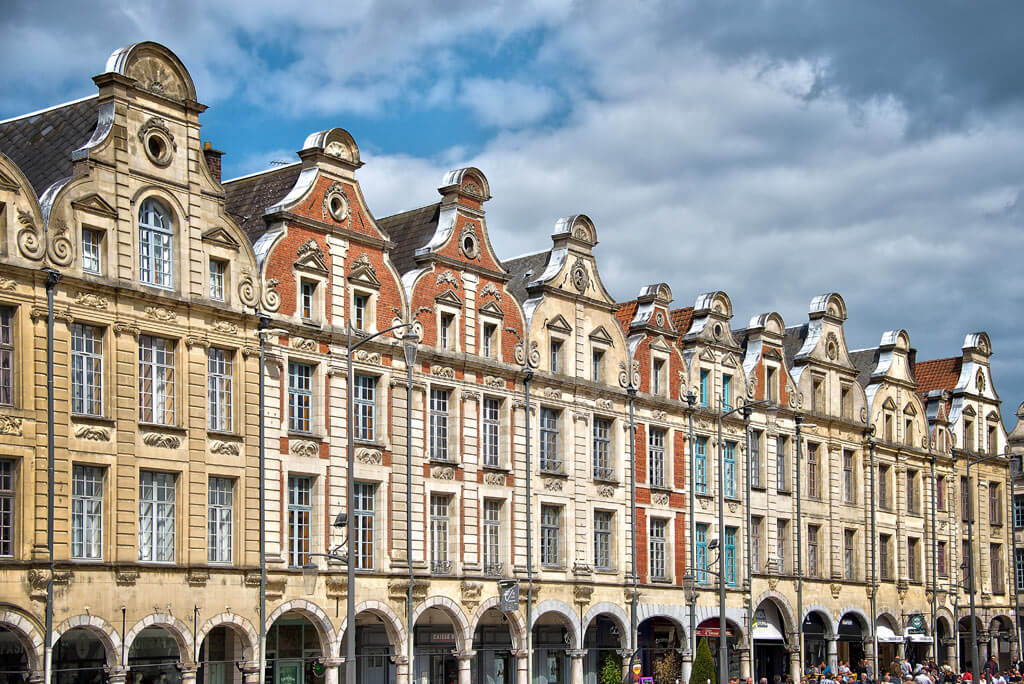
The beautiful capital of the historic Artois region, Arras , has a strong Flemish accent, especially in architecture, art, and food.
The arcaded Grand’ Place and Petite Place (also called Place des Héros) are the two main squares in Arras, and they boast a splendid collection of unique Flemish baroque architecture, beautiful cafés, and bars.
On Petite Place, you can climb the belfry for a bird’s eye view 75 meters above the center of Arras. The Belfry of Arras is in the flamboyant gothic style, and it was completed in 1554.
Don’t miss the Saturday market on Petite Place, perfect for a morning stroll and food tasting.
6. Amiens’ Hortillonages
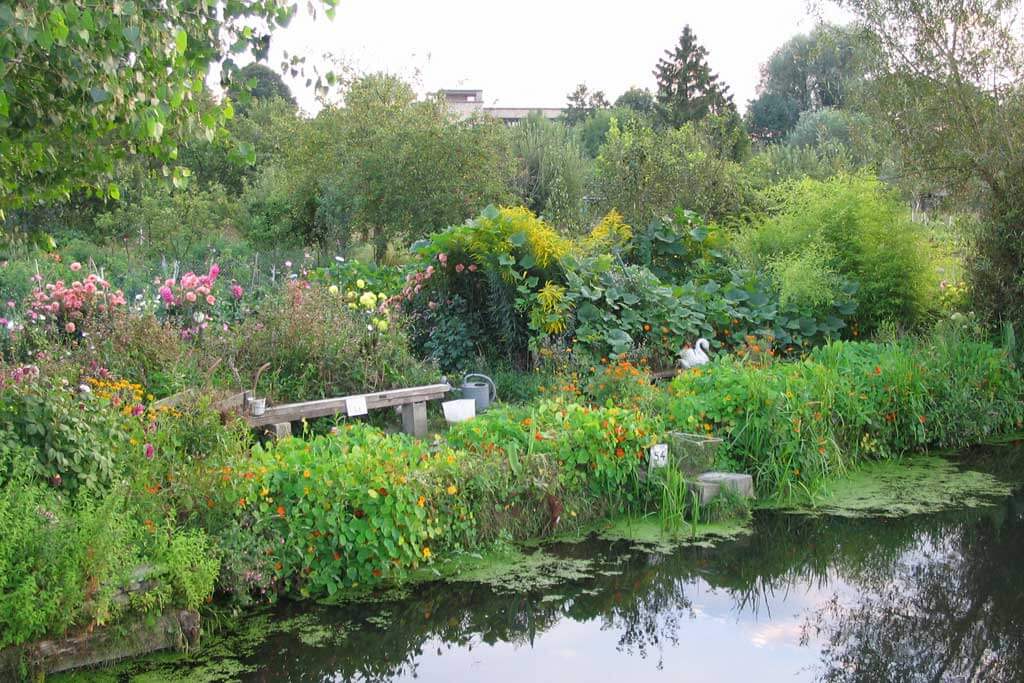
The Hortillonnages of Amiens are ancient marshes transformed into gardens, interspersed with canals. Unique in France, these beautiful floating gardens were built in the Middle Ages and intended for vegetable cultivation. Grown for about 800 years, the hortillonnages cover 300 hectares and 65 kilometers of canals called ‘rieux.’
Today, a handful of ‘hortillons’ continue cultivating these lands, and they sell their products at the floating market in the Saint-Leu district, which takes place every Saturday.
Located east of Amiens, not far from the cathedral, it is possible to visit the hortillonages on foot, by bike, or by traditional boats (barque à cornet).
A few guesthouses are located on the hortillonages, and they are unique places to spend a relaxing weekend getaway in Amiens. Au Jardin Sur l’Eau Horillonages always has excellent reviews and offers free private parking and free bikes.
7. Small Towns
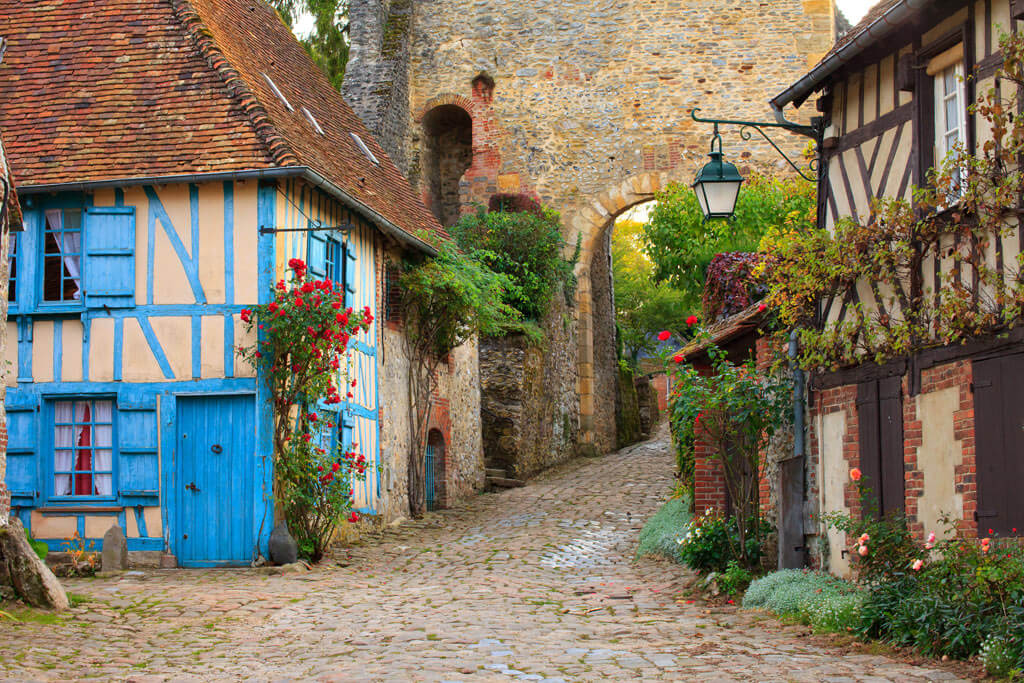
Hauts-de-France also boasts picturesque small towns, and they are perfect for visiting on a day trip from Paris. Leave the hustle and bustle of the French capital for a day and get a taste of the French countryside in lovely towns like Senlis or Gerberoy, in the Oise department, or Montreuil-sur-Mer, a little bit further in Pas de Calais.
Gerberoy is listed as one of the Most Beautiful Villages in France , and it is a dream destination for lovers of flowers and roses. A walk in this village is an absolute delight, with its narrow cobbled streets, 17th and 18th-century houses, climbing roses, wisterias, plants, and flowers. Don’t miss its rose festive, which takes place in June.
Senlis is a royal town, the cradle of the Capet dynasty. Hugh Capet was lord of Senlis before becoming the first king of the House of Capet in 987, and all his successors until Henry IV spent some time in the royal palace of Senlis.
Boasting Gallo-Roman ramparts, the medieval town of Senlis is the perfect place for a stroll with its paved streets lined with mansions and beautiful residences. Incredibly charming, the Old Town has been used as a set in numerous films.
Montreuil-sur-Me r is a picturesque town perched high on a hill, a pretty place of cobblestone roads, squares, narrow alleys, ancient houses, and a lovely walkway all around the town on the ramparts. Montreuil-sur-Mer is best known for being one of the scenarios of Les Misérables by Victor Hugo, based on the scenes he saw when he visited this town.
8. Forest of Compiègne & the Armistice Clearing
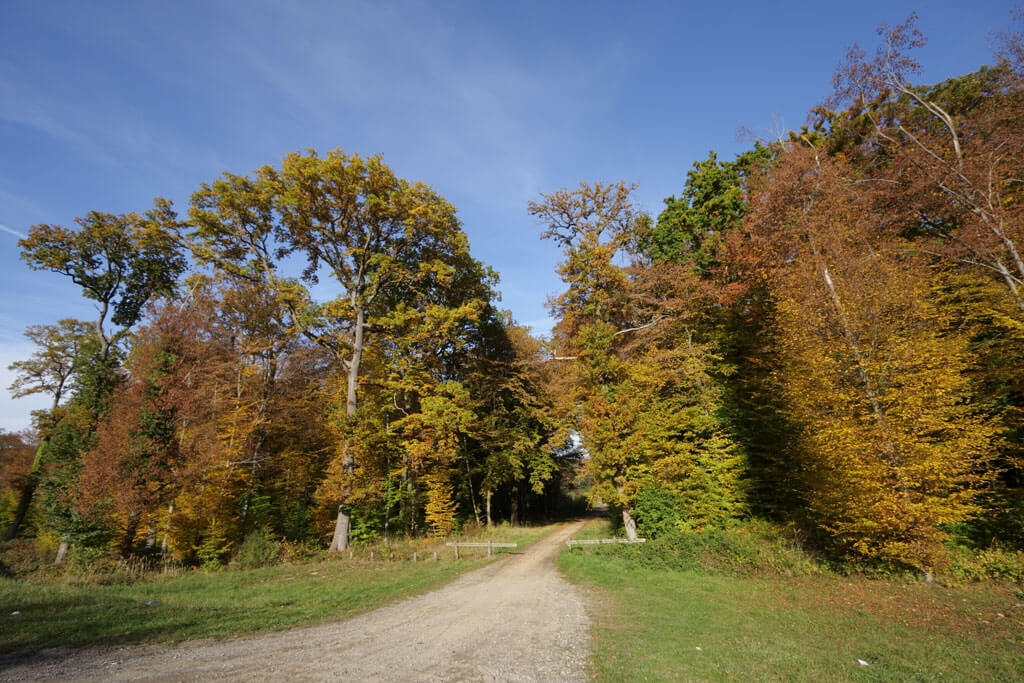
Today, the Compiègne National Forest is the third-largest deciduous forest, only after Orléans and Fontainebleau. One of the best places to visit in Hauts-de-France for nature lovers, it consists of 41% beech, 27% oak, 9% charms, and 7% pine, and it is crossed by 900 kilometers of geometric paths.
Since medieval times, Compiègne was the favorite hunting ground of the French kings and later the French aristocracy under Napoleon III.
Apart from its beauty, the Compiègne Forest was the witness of a crucial chapter of our history: it was in Compiègne Forest where the Armistice was signed on 11 November 1918 , bringing the First World War to an end. To illustrate this event, there are a statue of Marshal Foch, commemorative monuments, and a museum containing the railway carriage in which the Armistice was signed.
9. Château de Pierrefonds
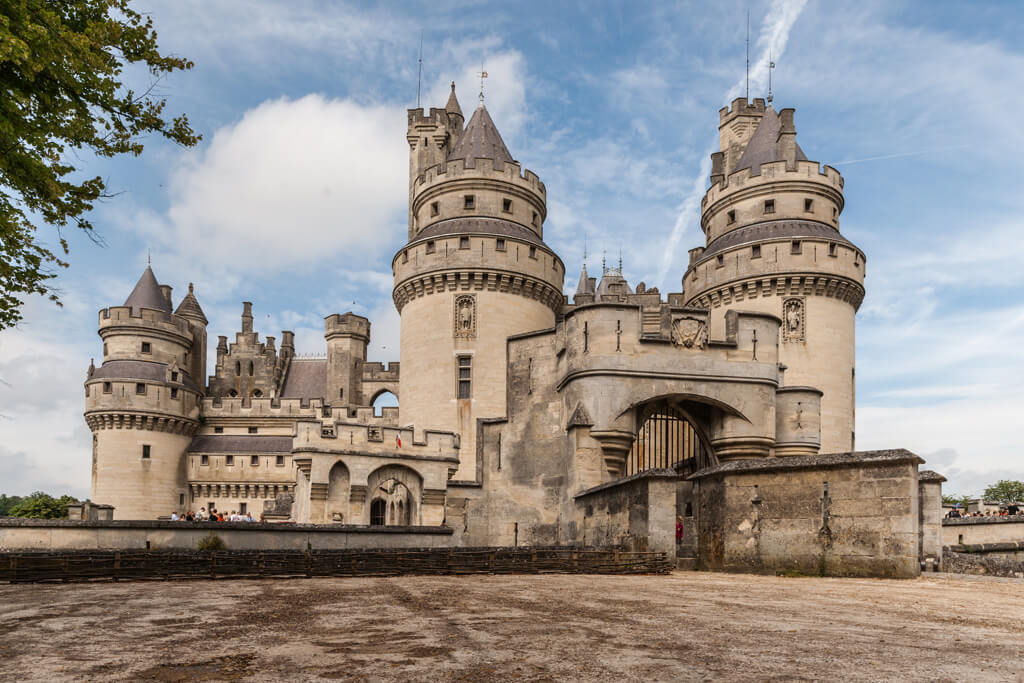
Château of Pierrefonds is one of the best castles in France to visit . Located on the southeast edge of the Forest of Compiègne, Pierrefonds was built in the 14th century by Louis d’Orléans, the brother of Charles VI, dismantled in the 17th and forgotten for almost two centuries.
One of the most beautiful Hauts-de-France tourist attractions, it was not until the end of the 18th century, with the onset of Romanticism and renewed interest in the past, that Château de Pierrefonds became the center of attention once again. Napoléon I bought Pierrefonds for less of 3.000 francs and Napoléon III appointed the Architect Viollet-le-Duc for its restoration.
Viollet-le-Duc’s restoration was a free interpretation of a building of the medieval period and, on the whole, corresponds to what Louis d’Orléans fortress must have looked like (according to him). In Pierrefonds, the decoration in general and imperial apartments are great to see. There’s also a permanent museum dedicated to Viollet-le-Duc’s life and work – Click here to buy your tickets to Château de Pierrefonds
10. The Bay of Somme
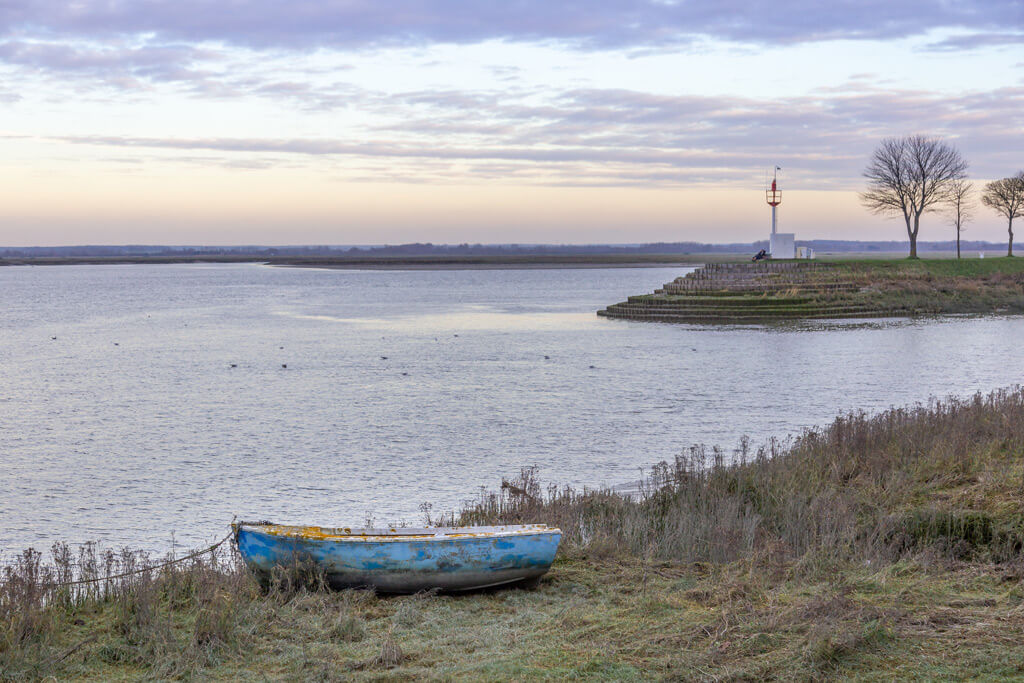
The Bay of Somme is one of the top Hauts-de-France attractions for nature lovers. The Bay of Somme is the largest estuary in northern France, an unspoiled place composed of dunes, marshes, and salt meadows.
Situated on the route of migrating birds, with more than 250 different species of birds spending a part of the year in the area, the Bay of Somme is a paradise for birdwatchers.
The bay is also home to the largest colony of French seals. The seals can be spotted resting on sandbanks which emerge as the tide recedes. This is where they recharge their batteries, give birth, feed their young, and moult.
The Belle Époque steam train connecting Le Crotoy to Cayeux-sur-Mer (Le Chemin de Fer de la Baie de Somme) is a trip back in time and an excellent way to discover the landscapes of the Bay of Somme. Visitors can also ride a bike along the cycle paths of the bay.
Saint-Valéry-sur-Somme is a charming town with a good accommodation choice. It makes a good base for organizing birdwatching, kayaking, or air-ballooning activities and exploring the bay in general.
Click here to book your hotel in Saint-Valéry-sur-Somme

11. Art-Déco in Saint Quentin
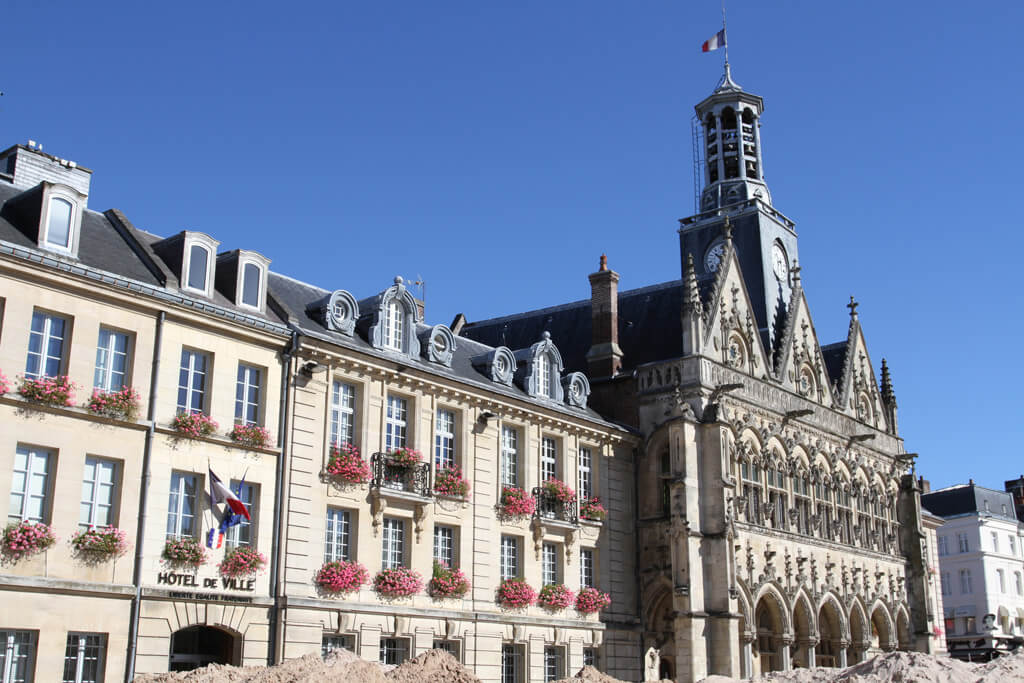
Saint-Quentin (Aisne) is one of the main Hauts-de-France destinations for architecture passionate. Saint-Quentin is a listed Town of Art and History in the Picardie historical region that boasts an impressive collection of architecture with buildings of Gothic, Neo-Classical, and Art Déco styles.
The Flemish-inspired Main Square is dominated by the Flamboyant Gothic-style façade of the Town Hall. This façade is adorned with 173 sculptures illustrating scenes from the life of the town!
Don’t miss the Saint-Quentin’s Art Déco circuit , which takes visitors through the city’s Art-Déco heritage in facades like the post office, the music school, or the lighthouses on Isle Bridge.
Finally, visit the Gothic Basilica of Saint-Quentin , constructed in stages between the 12th and 15th centuries. Inside, there is a beautiful Tree of Jesse from the 16th century, and the floor of the nave has an octagonal labyrinth of black and white paving stones from the late 15th century. Pilgrims were invited to follow the complex course of black stones before opening their souls to God.
12. WWI Sites
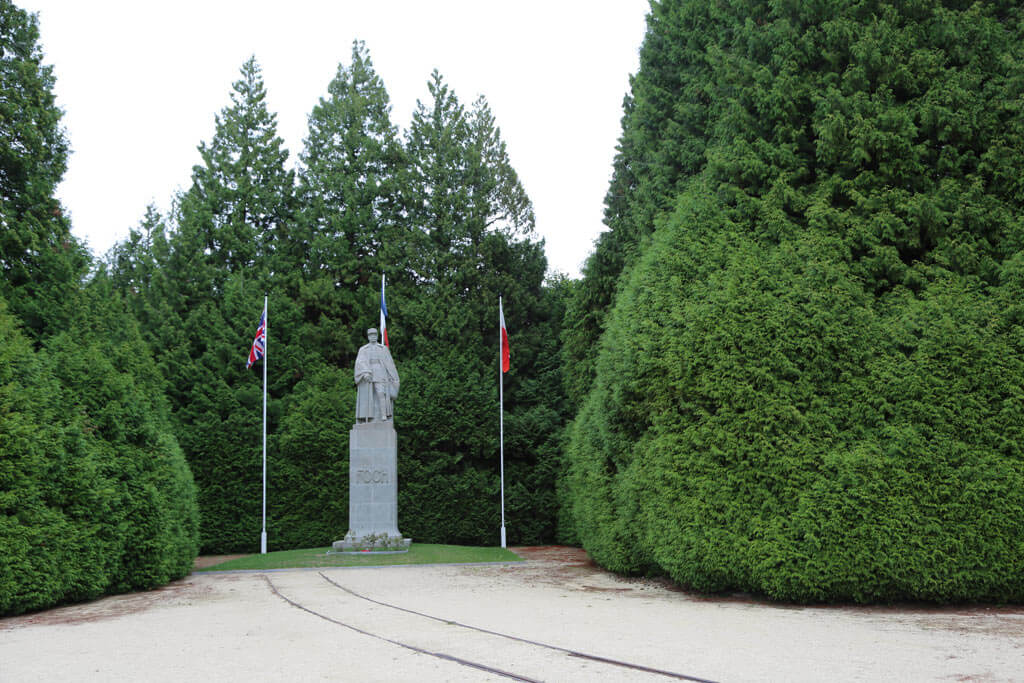
Sadly, the Hauts-de-France region is also famous for being the theater of many battlefields during the World Wars. Some of these war sites are very easy to visit on a full-day WW tour from Paris and are top on the list of the Hauts-de-France things to do.
During the First World War, the Battle of the Somme lasted four and a half months, during which more than one million men and women lost their lives – Click here to book your WWI Somme Battlefields day tour from Paris .
The Armistice, which marked the end of the First World War, was signed in the Forest of Compiègne , and visitors can still see the railway carriage in which the Armistice was signed.
The Remembrance Trail , a circuit linking Albert and Péronne (two symbolic towns of the Great War), enables visitors to discover the main sites of remembrance on the Western Front in the Somme.
Meters below the ground in Arras, there’s is an old labyrinth of chalk tunnels where the citizens took shelter. From these tunnels, the Allied forces coordinated the Battle of Arras in 1917. And just outside the city are memorials, cemeteries, and thought-provoking museums.
During the Second World War, Dunkirk in the Nord department was the site of the famous evacuation of British and French forces to the UK in Operation Dynamo in 1940.
13. Carnaval de Dunkerque (Dunkirk’s Carnival)
If the Hauts-de-France region is known for its many festivities, the Carnival of Dunkirk is certainly the highlight. Each year, more than 50,000 people take part in a whole series of festivities in the streets of this coastal town (and the surrounding towns) located an hour’s drive from Lille.
The origins of this historic festival date back to the early 17th century: the fishermen went away for many months to fish for cod near Newfoundland and Iceland, without knowing if they would ever come back. At their departure, boat owners came to give sailors half of their pay, which was an opportunity for a meal and a big, crazy party. This tradition has survived and today the Dunkirk Carnival has become a large gathering that sweeps through the whole city in an incredible mixture of sounds, colors, and lights.
Dunkirk is one of the top Hauts-de-France destinations in wintertime. For two-and-a-half months, the carnival-goers get dressed for the occasion and gather to parade in a happy, family-friendly atmosphere. Every Saturday night there is a grand ball and the bands or orchestras entertain people in the streets every Sunday afternoon.
The highlight of the Carnival is still Mardi Gras (Shrove Tuesday, at the end of February/beginning of March) with its giant, colorful parades. The crowd flocks in front of the City Hall, from which almost 450 kilos of wrapped, smoked herrings are thrown down for the occasion!
Hauts-de-France Food
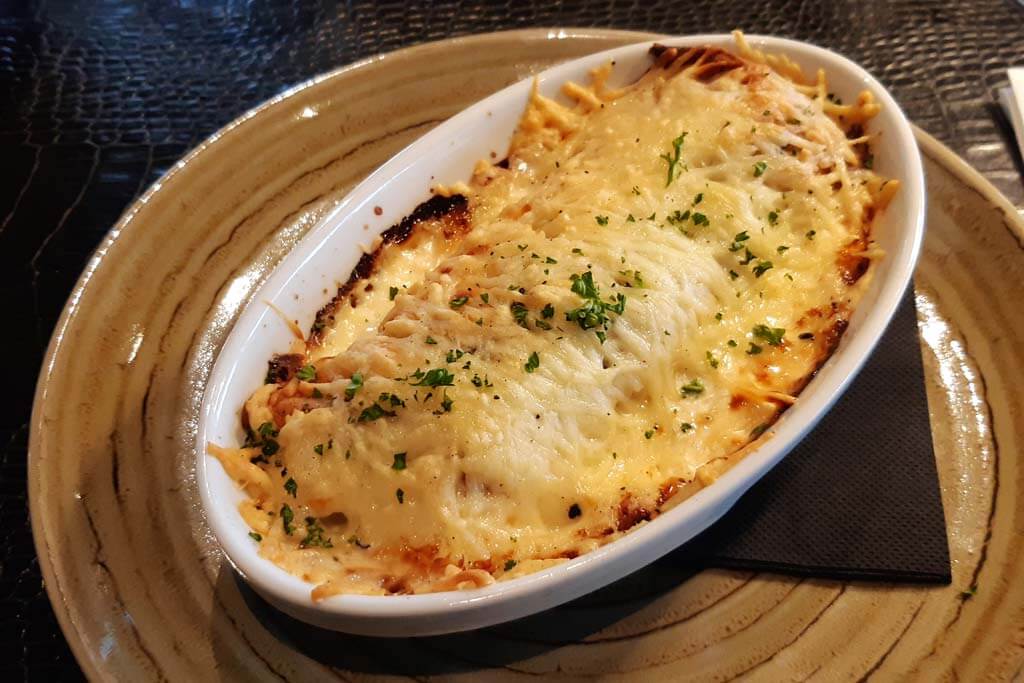
Take a break and get to know the local delicacies! The region Hauts-de-France offers a wide range of savory and sweet dishes to awaken your taste buds:
- Mussels and fries: a popular dish of the Braderie de Lille (the biggest flea market in France), this specialty was born in the 17th century in Namur in Belgium.
- Ficelle picarde: a pancake topped with ham, Paris mushroom, shallots, cream, and white wine and broiled in the oven. This is our favorite Hauts-de-France food and it comes straight from Picardy!
- Flemish carbonade: originally from French and Belgian Flanders, this variant of beef bourguignon is cooked with beer and braised beef and eaten with fries and gingerbread.
- Champagne: originally non-effervescent, Champagne wine has been consumed since Antiquity and is the symbol of festivities or friendship.
- Bêtises de Cambrai: these refreshing mint candies are the result of an error by an apprentice confectioner, hence the name bêtises (foolery).
We hope that you enjoyed the main places to visit in Hauts-de-France and the best things to do in the region. If you want to learn about other regions head to this article on the Regions of France , where we have summarized the highlights of each region.
Click here to explore other French regions
Back to Homepage
Disclaimer: This article may contain compensated links, meaning we get a small commission if you make a purchase through our links. It costs you nothing more (in fact, if anything, you’ll get a nice discount) but helps us to go on creating incredible French content for you. We trust all products and brands promoted here and would never recommend anything that isn’t of value. Please read disclaimer for more info.
(C) Copyright 2019 - 2024 France Bucket List. All Rights Reserved. Designed & Developed by France Bucket List || Disclaimer || Privacy Policy || Contact |
The Good Life France
Everything You Want to Know About France and More...
4 top towns you shouldn’t miss in Hauts de France
- Janine Marsh
- Nord-Pas de Calais

There’s masses of choice for places to visit in the Hauts de France region (Nord, Pas de Calais, Picardy). From grand cities like Lille, the capital of the region to tiny historic little towns and villages.
I’ve picked four towns that are easy to get to from Calais, that offer a chance to shop for some fabulous French products, have a fabulous history and will keep you busy from morning to night with great things to see and do…

Historic and charming Arras is a place to walk and wonder. Incredibly, much of the old town was re-built after being destroyed in WWI, but you would never know. With its tall Flemish style houses, cobbled stone squares it is a beauty. There’s a great museum that is affiliated to Versailles in Paris and has excellent exhibitions. The shops are wonderful from quirky book shops, clothes, kitchen stuff that you just don’t see outside of France, chocolate shops, bakeries, cheese shops and homeware. There’s a great market on Wednesday mornings in the big square in front of the beautiful town hall. Go to the town hall to enter the Boves, ancient underground passages that run underneath the town. Also head to the town hall to . The town has loads of terrific cafés and restaurants.
Don’t miss : Climb the UNESCO listed belfry for amazing views over Arras and the surrounding countryside – it’s high up and not for those with no head for heights. Entrance is via the town hall. Info: explorearras.com
Boulogne-sur-Mer
If you’ve never visited the old town ( top photo ) you’ll be very surprised to go through the vast stone gateways and discover you’ve stepped back in time. Pretty, quirky, little shops and charming restaurants in the rue de Lille will keep you coming back for more. There’s a museum in a chateau for rainy days (it’s a rather dull affair inside with an eclectic mix and some really fascinating pieces and the building is attractive).
Don’t miss : The Basilica Notre Dame in rue de Lille . This ancient church has a deep secret, deep in the ground that is. The crypt is the largest in France and is beautifully decorated, I’ve never seen anything like it. Info: Tourist office for Boulogne-sur-Mer
Montreuil-sur-Mer

Victor Hugo visted this town that’s perched high on a hill in 1847 and never forgot it. Years later he wrote “Les Miserables” based on the town and the scenes he saw. The history of this place goes back millennia. Today it is a pretty place of cobble stone roads squares, narrow alleys, ancient houses and a lovely walkway all around the town on the ramparts giving magnificent views over the surrounding countryside.
Don’t miss: The saturday morning market in the main square followed by a meal or drink in one of the many cafés, bars and restaurants, its the perfect people watching place! Info: Montreuil-sur-Mer Tourism
The Place Foch is a lovely square and home to the town hall as well as several excellent bakeries and cafés where you can sit and watch the world go by. St Omer has plenty of restaurants to suit all budgets and there’s a lovely Saturday morning market which has has the best veg stalls I’ve seen in France. There are a couple of museums and an astonishing Gothic church which contains a Rubens painting and is well worth a visit.
Don’t miss : The library. From the outside it looks like any other rather boring municipal building but head to the first floor and turn left into a wood paneled room where books dating back to the 9th century are kept – utterly amazing. Incredibly a first edition Shakespeare worth millions was discovered here recently, which gives an indication of just how special this place is.
Info: Saint Omer Tourist Office
Latest Posts

How true are these French stereotypes ?

The Perfect Paris Tour

French Bread the Staff of Life

The women who transformed the champagne industry

The Art of the Concept Store

What to see and do in La Baule Pays de la Loire
Related posts.

The fabulous cuisine of Pas-de-Calais

One of the best places to enjoy Autumn in France | Pas-de-Calais

Discover real Pas-de-Calais: heritage, history & heavenly beaches

Agincourt | The legends and a historic museum
Get updates and stay connected - subscribe to our newsletter.
Everything You want to know about france and more…
The Good Life France is the leading independent website about all things French from travel to culture, gastronomy to property and practical guides & more…
Let's get social
- 38 min read
The best places to visit in Hauts de France region
Hauts de France is the northernmost region in France and is made up of five departments, Aisne, Nord, Oise, Pas-de-Calais and Somme. The region has a reputation of being boring and miserable to French people from the south (and the weather isn’t that great either outside Summer) however for me, this is one of the best regions. I spent a lot of my early traveling days exploring the region, stayed with a French family, learnt the culture, language, food and of course, the beers (based on the styles of Belgium beers from across the border to the north), and even managed to get some work out here.

I found the local people to be lovely and welcoming and after a while, they have a great sense of humour. The amount of laughs I have had here is amazing. I have been traveling to this region for over twenty years as I still have friends here, but I also come to see concerts and watch Lille football club in Ligue 1. I even still do the odd-booze cruise as I love certain beers from the region, more on that shortly. I highly recommend a visit to this region, there is lots to do from city breaks, World War I and II history (or if you want to find older history, the Battle of Agincourt can be visited), sporting activities and if lucky, on a warm summer's day, sunbathe on the sandy beaches of Calais or take in the sea breeze at Le Troquet.

I have divided this post into five sections, one on each department which makes up the Hauts-de-France region. I have written about the places I have visited and highly recommend and I am likely to keep updating this post as I am always finding something new to explore.

Places to visit in Hauts de France: Pas-de-Calais
This department has the towns of Calais, Boulogne-sur-mer, Lens, Arras and Saint Omer (which is known for its beer) and has the most touristy things to do (that’s my own personal opinion). This is the part of France I fell in love with. I still can’t put my finger on it but after a few days checking out Calais and Dunkerque on my first visit, I was itching to return. They are not the most glamorous towns in the country but they are beautiful in a different way. As mentioned earlier, the people here are in bright spirits and will make visitors welcome. However the further inland I went from the coastline, the rolling hills which lead to other towns to the east and south all have their historic aspects. Also if I have to drive to France, it is this part of Hauts-de-France I will touch first. There is always a buzz of excitement when I drive the car of the ferry or car train in Calais, that great feeling of being in France always hits me. In all the traveling I have done in the world, I feel for this region more. Anyway, let's crack on and let me tell you about the Pas-de-Calais department.

This part of France is easy to reach. If arriving by car, there are two autoroutes from Paris, one via Lille and Lens and the other via Amiens. There is one from the north via Dunkerque and Brugge in Belgium. Trains serve the main towns via regional routes however there are a few TGV high-speed trains a day which go to Pas-de-Calais from Paris and Lille. (As I write, Eurostar have stopped servicing Calais-Frethun station since Covid-19 and the service was shrunk in early 2020, no plans as yet to restart services from here). For people coming in from the UK, there is a ferry crossing from Dover to Calais and a car shuttle train which goes through the Channel Tunnel (le tunnel sous la manche) from Folkestone to Coquelles (near Calais). There is a ferry crossing from Dover to Dunkerque but not as many per day compared to Calais. The nearest airports are Paris Beauvais and Lille but for larger airports, there is Paris Charles de Gaulle and Orly and nearby Brussels.

For me personally, Calais may not be the most beautiful place in France as it’s a port town and has had a bit of a reputation in recent years with immigrants making camps surrounding the town, waiting for a chance to get smuggled across to the UK. However, don't let that put you off. I felt a great feeling to step onto the shores or streets of Calais and explore. The town does have its good bits about it and I will start my post with Calais (and a bit of history, I sure do love my French history just to warn my readers) .

Calais history steams back hundreds of years ago and grew into a major port with important trading links with England across the water. Eventually King Edward III of England got bored and annexed the city to which the town became known for its wool production. It took France over 200 years to get Calais back and then the biggest event came in the Second World War when the Nazi Germans bombed the town and was virtually razed to the ground. Since then the town has been rebuilt and the industrial area to the north of the centre was thriving over the last fifty years but has since been in decline.

The centre itself has a few sights to see such as the Place d'Armes where there is a watchtower (known as the 'Tour du Guet') which has stood here since the 13th century and was used as a lighthouse until the 19th century (seems a bit odd as it is quite far from the coastline) . Nearby is the church of Notre-Dame which was built when the English had the town and is the only church building built in the English perpendicular style in the whole of the country (that is France of course, not England, now that wouldn't have made sense!) In this church, one of France's former presidents Charles de Gaulle married his wife here.
The most important building and one which can be seen miles around due to its belfry is the Hotel de Ville (the town hall) which has stood here since the 16th century and has the famous 'Les Bourgeois de Calais' statue located in the gardens which was completed in 1889 by Auguste Rodin. The sculpture represents an event which happened in the fourteenth century during the Hundred Years’ War when the port of Calais on the English Channel/La Manche was under siege by the English for over a year. According to legend, the king of England, Edward III, coming back from the Battle of Crecy laid siege to the town whilst King Philip VI of France gave orders to defend the city, which failed and the English army forced the king and the city to surrender as a lot of people were suffering from starvation.

King Edward offered to spare the people of the city if any six of the city's leaders would surrender themselves to him (which presumably would be killed) . King Edward gave orders that they all should walk out wearing nooses (ropes) around their necks and carrying the keys to the city plus the castle. Eustache de Saint Pierre (one of the city's wealthiest leaders) volunteered first and five other burghers (wealthy middle class folk) followed him to the city gates. Although the burghers expected to be killed, their lives were spared by the Queen of England, Philippa of Hainault (King Edward’s wife who was French and came from the Hainault region of northern France) who persuaded him not to kill them because this would be a very bad omen for the their child to which she was carrying at the time.
Back in 1895 the city of Calais wanted a statue of the six burghers made and eventually the design by a French artist, Rodin, was chosen (after some debate). Soon after the first cast was made and placed in front of the city hall in the centre of Calais. After Rodin’s death, French law stated that no more than twelve casts of the statue can be made. The other casts can be found at the Glypototeket (Copenhagen), the Royal Museum in Mariemont (Belgium), Victoria Tower Gardens next to the Houses of Parliament in London, the Rodin Museum in Philadelphia, the gardens of the Musee Rodin in Paris, Kunstmuseum in Basel (Switzerland), the Smithsonian Hirshhorn Museum in Washington DC, National Museum of Western Art in Tokyo, the Norton Simon Museum in Pasadena, California, the Brooklyn Museum in New York City, the Israel Museum in Jerusalem, the Metropolitan Museum of Art in New York City and Plateay in Seoul (South Korea). The one in Seoul is the twelfth and final cast and no more can be made.
I found the story very moving, interesting and somewhat dismayed about what my home country and our neighbours to the south were like in the past. The story of the six burghers of Calais is always one I will remember for a long time and take around with me on my travels.

The road from the centre towards Sangatte (just south of the city) runs alongside the beach. In the summer months the beach is quite popular and is one of the sandiest on the northern coast of France. Around the town, there are some good bars and restaurants.

The coastal road (the D940) along the Côte d'Opale heading south out of Calais towards Boulogne-sur-mer is a nice drive or cycle ride especially on sunny days. The road is bendy in places, up and down hills through beautiful valleys and there are numerous spots on the way to pull over and check out. First off is the ‘Deux Cap’s - Two Capes’, Cap Gris-Nez and Cap Blanc-Nez.

Cap Blanc-Nez (in English means ‘Cape White Nose’) is known as a cape but it doesn’t stick out into the water. It is a large white cliff which is 134 meters high (similar to that on the other side of the channel at Dover), which has an obelisk at the top. The obelisk here commemorates the Dover patrol which kept the English Channel/La manche free of Nazi-German U-boats during the First World War. Looking around the area there are a lot of bunkers which were built and used during the Second World War along the coastline and looking inland, there are a lot of craters which can be seen in the fields from the bombardments.

Further south is Cap Gris-Nez which is a cape that juts out to the sea and is known for the grey colours of the rocks. Basically the English name for this place is ‘Cape Grey Nose’. Despite it not being a stunning place to visit like Cap Blanc-Nez , it is however the closest point of France to England and on a very clear day, the White Cliffs of Dover can be seen. Because of its closeness, over the centuries there have been various invasions on this part of the coastline. Nearby on top of a cliff there is the ruins of a tudor fortress built by England’s King Henry VIII but during the Second World War, the Nazi-Germans built a blockhouse on this site. This and hundreds of other sites along the coast formed the ‘Atlantic Wall’ which was supposed to stop the British invading Nazi-German occupied France. Even in 1940 Nazi-German leader Adolf Hilter visited the Cap Gris-Nez fortifications. However four years later the Canadians came in and kicked the Nazi’s out. These days, a few miles away in the village of Audinghen, there is a museum about the fortifications and the history of the area.

France has many amazing cities, towns, pretty little villages in the countryside and many of them are visited by the hordes of visitors which come to the country every year. One of them in the Hauts-de-France region is the fishing town of Boulogne-sur-mer. This sleepy town on La Manche (or to us British known as the English Channel) does have visitors coming here, mostly people from Netherlands and Belgium who travel on the nearby autoroute with their campervans and look for somewhere to relax for a few hours and Boulogne makes this a great pit stop. However in the last few decades, a lot of British people do not stop here compared to the dizzy heights of cross-channel tourism where a lot of people would day trip here, take a look at the markets, sample the food and walk the cobble streets of the old town. It was time to check out why the town needs to be on anyone’s itinerary if just passing by the town for a few hours, a day trip over from England or on a road trip around Northern France.

As mentioned, loads of Brits would flock here during the 1960’s and 1970’s, well in fact until the late 1990’s (when air travel became cheaper and package holidays with tour companies became the norm and off we would go to Spain or Greece leaving northern France a place not to visit unless a visit to the local supermarket or duty free shopping for a day trip was necessary as the goods were cheaper on mainland Europe back then). There would be ferries crossing the English Channel from here to Folkestone or Dover (Dovres) but these days, no ferries go to England. In fact the harbour looks very quiet, only fishing boats can be seen. For ferries these days, Brits would have to drive down from Calais or Dunkirk (Dunkerque). This is probably another reason for a decline in tourism from the United Kingdom. Another factor is that tourists would need a car. Coming over as a foot passenger on the ferry can be a struggle as there is no port bus at the ferry terminal at Calais (but visitors can bring a bike). Then there would have been a long walk into the centre of Calais from the ferry port due to some roads blocked off due to the crisis there with migrants and then the local trains don’t run as often between the towns. So, traveling can be a pain in the ass to get to Boulogne .
However, if owning a car, then the doom and gloom is lifted and the town is definitely worth a visit. Parking up on the outskirts of the old city (also known as ‘Haute Ville - High Town’ or ‘Ville Fortifiée - Fortified Town’), this area is a few minutes walk up the hillside from all the car parks (or about fifteen - twenty minutes from the seafront). A little hint: my favourite car parking spot is the secure underground car park called St Louis which is cheap as well and can be found on Rue Saint-Louis.
From the car park and walking up the hill, the first sight to see in this town is Square Auguste Mariette Pacha , a nice little garden area which has an Egyptian mini-pyramid as well as two sphinxes looking directly across from the western gates of the old city walls. Not quite sure what the connection is with Egypt and Boulogne-sur-mer, however it looks pretty in this park.

Walking underneath the gate - Pont des Dunes - and turning right up a small staircase, this took me to the top of the walls to which I could walk all the way around, taking in views of the buildings in the new part of the town down below, the skyline of the old town and in parts, the sea. There is a huge walking path in places but it's best to walk this on a dry day as the ground is gravel and mud.

From the Pont des Dunes and walking eastwards along the cobbled street known as Place de la Résistance, this took me to the Belfry which has stood here since the 12th century and is one of fifty-six belfry towers dotted around Northern France and Belgium which has UNESCO World Heritage Site status.

At the end of the street is the main square of the old town where the town hall is located. In the heart of the square is the Jardin Ephémère on Place Godefroy de Bouillon where the locals take a seat on the bench, look at the pretty flowers and watch the world go by. Around the square there are cafes and restaurants which are also an ideal location to do one of France’s number one passtime, people watch. From the square heading north along Rue de Lille there are many restaurants to choose from and I decided to eat in ‘Le Swan’ where we found the price for a set menu (three-course meal) a fantastic deal and the food to be very tasty and feeling. The fish was fresh from the sea and the meat cooked how it should be. The excellent customer service and the decor was even more pleasing and we left feeling very satisfied.
On the Rue de Lille is also a scene, the cobbled street with the shops and the beautiful Notre-Dame cathedral in the background which is located at the end of the street.

The cathedral is located on top of the hill where the old town is situated and can be seen from all over town. The dome reminded me of the dome on top of St Paul’s cathedral back home in London. The full title of this cathedral is the Basilica of Notre-Dame de Boulogne , however this basilica is not actually a cathedral but a church. The locals call it a cathedral and to be honest, a lot of tourist’s call it a cathedral and it has somehow stuck. The church has stood here since 1875 and took nearly fifty years to build.
However the history of this church is amazing, like there has been a church that has stood here since the days of the Roman Empire. Later on in the 12th century, a new church was built on the site of the old church and lots of changes happened over the year. Now, what interested me was that in the year 1308, the church was the location of a royal wedding! Yes, a royal wedding, between King Edward II of England and Isabella of France (one reason for this was to dampen down tensions between the two countries). After more research, Isabella gave birth to a son back in England (Edward III of course) and then was blamed for the murder of her husband (long story)!. Then she died in Hertford Castle which is located in the small historical town of Hertford in Hertfordshire (north of London) which is very close to my hometown of Stevenage. I never knew this and found this really interesting to learn.

The current church as previously mentioned started to get built in the early 19th century, however whilst workmen were digging the foundations, they discovered a crypt which had been laid unknown for many centuries. After the ‘clear’ out, the historians found out that the Romanesque columns are from the 11th century, the crypt itself is 128 meters long and is the longest crypt in the country. There are also many rooms inside this crypt which also includes the foundations of a Roman temple (yes, Roman!) and cannonballs from the siege of 1544 (where historians think this is when the crypt got buried).

After the fascination of walking around the church and discovering the crypt, I walked around the corner to the castle which has a fantastic wide moat going around it and the brickwork on the facade is immense. The courtyard is circular and probably could be a great venue to host a tennis tournament (if the nets were raised), however imagination aside, the castle hosts a museum on the history of the town. Just taking a walk around the courtyard and the castle walls did it for us. It has charm, it has beauty and blends in very well with the surrounding buildings.

Away from the old city, Boulogne’s seafront and ‘new town’ has plenty of restaurants and shops to look at and on some days, roads are shut off for a street market. Walking along the seafront is a great idea (but only when the sun is out, the rain and wind of the sea can be awful at times) and the beach north of the town is wide, sandy and golden and is a great place to go to when the sun is out. Also in the beach and harbour area is the NAUSICAA sea life aquarium which is also one of the region’s tourist attractions.
Outdoor activities are also highly popular on this part of the Cote d’Opale and cycling seems to be the number one sport. The number one ride to do is through the national park just north of the town and follow the coastal road or other cycle tracks through the pretty villages to Calais. Running is second around here and the nearby countryside is a great place to train on a Sunday morning if doing a long run.
Inland towards the eastern region of Pas-de-Calais is the town of Arras and Olga and I love this town. We came here during the Christmas market season but we managed to check out the town’s main attraction (more in a moment) and loved walking around the cobbled-streets of the centre with the Flemish-style buildings overlooking us. Like most towns and villages in this region of France, there is a lot of Dutch influence on the facades of buildings. Also the Belfry at the Town Hall is one of many belfry's listed as a UNESCO World Heritage Site and is the most dominant feature of the area. The building has stood here since 1554 but had to be rebuilt after World War I. Now standing at 75 meters (246 feet) we had the perfect view. We could see for miles but the view overlooking La Place des Héros, a huge square which the Belfry is located on and is surrounded by some amazing buildings which houses shops, bars and cafes.

The Christmas market was a pleasant moment and we managed to look at all the stalls which sold food, drinks, wooden cats, honey and even Polish food. Wine tasting was to be had but we preferred to try the traditional hot mulled wine and also the local hot chocolate. There were also rides and entertainment for the children in the centre of the Grand Place square which is surrounded by many more buildings which could have placed us in a town like Bruges or Anvers over the Belgium border.
(Fact: Unlike many French words, the final S in the name of the town, Arras , SHOULD be pronounced. Just thought I mentioned this).

Underneath the City Hall and the Belfry Tower is the entrance to the Boves'. This guided tour which can be booked up at the tourist information office in the same building takes visitors under the streets to discover the underground history of the town. Originally used as chalk quarries, the Boves were dug on this site from the 10th century and used for various purposes over the years like food storage and cellars of the above restaurants. Even one fishmonger/restaurant owner thought the hole in the ground going into the Boves was a rubbish bin and over time, down below a huge pile of fish bones and other bits piled up and the smell became unbearable!
The network of galleries which covers the size of the town and beyond was also used as a shelter and rallying point for the British troops in 1917 (World War I) as they awaited to attack the Germans in the Battle of Arras . The forty minute tour is worth going on, we were amazed how solid the walls were (despite a few leaks appearing making the ground slippery) and how easy it could be to get lost down there. The tour guides are very informative and they certainly know their history of the town. We would recommend this tour very highly for anyone visiting this area (and it is very cheap too).

Another sight to mention near Arras which is worth a visit lies a few kilometres north near the village of Vimy, where the Canadian National Vimy Memorial is located. This is dedicated to the memory of the Canadian army killed during World War I and also serves as a place of commemoration of soldiers killed or presumed dead in France who have no known grave.
Why did I stop here? I noticed the memorial on a postcard in a shop in Arras an hour earlier and it caught my eye. It looked impressive so I thought about coming here to check it out as I was in the area and I wasn't to be disappointed. The memorial is big and I strolled through much of the battlefield park which also overlooks a portion of the ground where the Canadians made their assault during the Battle of the Vimy Ridge , a military engagement fought as part of the Battle of Arras.The area is peaceful, trees blowing about in the cold wind, not a soul to be seen.
The memorial itself is located on Hill 145 (as it was known to Canadians and the British forces during the war) which is the highest point on the ridge. Whilst I was walking around, I was paying my respects in silence. Near here (on further research which needs to be done), I lost one of my Great, Great Uncles during the First World War and is remembered at a memorial in nearby Loos (on the outskirts of Lens). Maybe he fought in this battle? Who knows but for me personally and my family, it would be interesting to find out (for more, please read my personal-family-blog-post on the Battle of the Somme here ) .

Béthune, located between Arras and Calais is another town which is worth a visit, rich in architectural heritage and history. With its many cobbled streets, shops and cafes, I took in the belfry which has 133 steps. It was closed on the day I visited but I have been told if visitors go to the top for the views, the Belgium border can be seen to the north. There are not many sights to see in the town apart from the nearby large brick church but I came here for the Christmas market. A lot smaller than the one in Arras, there were still plenty of things to taste, smell and look at. Located in the square with the Belfry, once again amazing Dutch-style buildings surround the area with the town hall.

The other thing I love to do is try and spot as many Belfries as possible. This part of France and also Belgium, there are fifty-six belfrys and they are all on the UNESCO World Heritage List. Several of them are located in Pas-de-Calais, in Aire-sur-la-Lys, Arras, Béthune, Boulogne-sur-mer, Calais and Hesdin. Most of the belfries are projected from larger buildings but there are a few standalone ones. For those who are not quite sure what a belfry is, it is a structure enclosing bells for ringing as part of a building, usually as part of a bell tower or steeple. A belfry encloses the bell chamber, which houses the bells. The walls are pierced by openings which allow the sound to escape. Underneath the chamber there is usually a room below to house the ringers (the guys who pull the rope to make the bells chime).

Places to visit in Hauts de France: Nord
This part of the post is about the department of Nord, the area, what to see and do and why I love coming to this part of the world. This department has the towns of Lille, Dunkerque (Dunkirk), Cambrai and Valenciennes, with Lille being the main administrative city for the department and the whole of Hauts de France (and also being the fourth largest city after Paris, Lyon and Marseille) .

History: I won’t go into too much detail but the way I see it, this area was settled by Belgae tribes (as well as settling south of Nord and all around Belgium. At some point they managed to get across the English Channel / La Manche and settled in Southern England. There is even a former settlement near my home town of Stevenage) . Then the Romans came in and settled. They even made a road from the port of Bononia (Boulogne-sur-mer) to Colonia (Cologne) in Germany. Then the Saxons came in with their Dutch type language which kinda influenced the area and in cases, Dutch can be heard in some places in Nord (but not too often). At one point France (or the area known as County of Flanders) included the cities of Brugge, Gent and Antwerp and went into the southern part of the Netherlands. Then the area was sucked into Netherlands territory before the Spanish invaded the area and Nord became part of the Spanish Netherlands. That was short lived as the area became part of France and in recent history, had two wars with the Germans.
The area has been under so many influences but it seems since 1945 it has found its peace and the locals have moved on & made this a better place (ok, sometimes there is the odd squabble with politics and immigrants from Asia and Africa around the ferry ports who are trying to get to the UK but apart from that, life is good) .

Lille : the business city of France and one of the major crossroads in Europe (as it connects with Brussels, London, Paris, Western Germany and so fourth). I like Lille but it’s a bit misplaced with a lot of buildings and streets in the centre making me think that the city wouldn’t look out of place in Belgium (again, it's all down to history) . However a lot of buildings are very modern and because of this, I love the mixture in architecture.
After some digs around the area, Lille seems to have had people living here since 2000 BC and as mentioned, the area has had several occupiers. However it was in 1667 saw a big changing moment for the city as King Louis XIV of France laid siege on Lille and became a part of France, which really pissed off the locals. It took some time for the locals to gain confidence with the French but it came. There was no attempt to wipe out the Picard language (more about that later) and the locals have always felt Flemish.
A citadel was built in the 17th century near the centre of modern-day Lille however it didn’t stop France losing Lille to the Dutch. For five years from 1708 to 1713 the city was taken during the War of the Spanish Succession but eventually was back in France’s hands. The French Revolution came along and the city of Lille (which most of the citizens were Catholic) took little part in the event. However there were still riots and destruction of churches but the city picked itself up and held its first elections in 1790.

Now you would think that would be it for Lille but no, even under French rule, the city was still being attacked by outsiders. 1792 saw the Austrians coming along and laying siege to Lille. That lasted several days but there is still evidence in the buildings near the Grand-Place (on modern day maps this is called Place du General-de-Gaulle) , where there are black dots around windows (they are not decorative cartouches) which are cannonballs lodged in the facade! A lot of buildings and the main church were destroyed but the city picked itself up again. The 19th century came along and because of Napoleon continental blockade against the British (yup, he didn’t let us British come onto the European mainland, how many times have I heard this during history lessons!?!) , the city became a leader in the textile industry. The city produced a lot of wool where the nearby cities of Tourcoing and Roubaix produced the wool.
By the 1860s the city grew even more and there were 80,000 people living here which meant a huge rise in ‘social’ activities for the locals. Taverns and cabarets popped up everywhere and it was worked out that for every three houses in the city, there was a tavern (not quite sure if this is true but sounds good to me!) . At one point there were sixty three drinking clubs, thirty seven places for card players to gamble, twenty three places for people to go bowling, eighteen places for archery and thirteen places to play skittles. Sounds like a party town to me and the locals were very happy to be here. Into the twentieth century, more people came here to work due to the industrial revolution with railway lines being built and a lot of coal being mined in the area.

Then it all went downhill again, Lille was occupied by the Germans in October 1914 after a ten day siege on the city. The city was destroyed by heavy shelling and the Germans made Lille one of their bases. This lasted until October 1918 when the British came along and kicked the Germans out. The great depression came along and a lot of locals were living in poverty during the 1920s and then it just got worse for the locals when the Germans came back to the city after another siege at the start of the Second World War. However this time as the locals still had the First World War fresh in their minds, they left the city quickly and headed anywhere where they could escape the Nazi Germans. Lille was under Nazi Control until September 1944 when the British, Polish and Canadian armies came to the area and again, kicked the Germans into touch.
After the war life was normal and still is. Peace has come to the city and hopefully will stay that way. That’s the background of the city so what has the city got to offer for visitors? There is the citadel, the Grand Place (which General Charles de Gaulle was born nearby) , the cathedral and beautiful buildings of Dutch style architecture.

Dunkerque (Dunkirk) : the northernmost city in France and is 10km (6.2 miles) from the Belgian border on the North Sea coast and is the third largest French harbour. I have to admit I am not a big fan of the city itself but have stayed here several times as I cycle to and from Belgium from nearby Calais. I just find the place a little bit boring and I don’t like the looks of some areas. That's just my personal opinion. However the history here is what the city is worth visiting for. Similar to Lille because of the area, the city has had many occupants but it was during the Second World War that the Dunkerque came into the spotlight.
During 1940 in the Battle of France, the British Expeditionary Force were aiding the French and Belgian armies in the area but had to retreat as the Nazi Germans were going crazy and killing Allied forces left, right and centre. They were just too strong and well prepared. They all retreated to Dunkirk and at one point there were more than 400,000 soldiers trapped. However, at this point for several days, the Nazi Germans stopped the attack. Only Adolf Hilter knows why he did this and has taken this to his grave. But then the attacks started up again, this time sending in the Luftwaffe (Nazi German air force) and started bombing Dunkerque from above. An evacuation by sea was needed and this was called Operation Dynamo. Winston Churchill (British Prime Minister) ordered any ship or boat available, didn’t care what size it was, to get over La Manche and rescue as many soldiers as possible. In the end over 338,000 men were saved (which included 123,000 from France) using over 900 vessels.
Away from history, the most notable places and things I came across are the town hall and its belfry tower (more on that later on) and the beaches. Despite the beaches being well known due to the history they are quite wide and sandy, so when the hot summer days come along, it can be a fantastic place to get a tan.

However it’s the coastline south of Dunkerque heading towards Calais which caught my eye. The border line of Nord ends at the southern side of Gravelines and Grand-Fort-Philippe. Gravelines started out life during the 12th century when a canal was built to connect the sea with the town of Saint-Omer near Calais. During this period the town was on the western borders of the Spanish held Flanders region, so Gravelines became theirs as the English came along in 1383 and destroyed the fortress but after that the English had to retreat back towards Calais. Further battles between the English and Spanish happened in the area, on land and at sea and eventually after three hundred years, the French finally annexed the area and became a part of France. But it took another three hundred years for all the locals to speak French as they kept their Flemish roots and language alive. One of my favourite things to do when I stop off in the town during bike rides is to go to the local bakery just off the main square, get some fresh bread and croissants and take them to the main square and refill. Sunday mornings are pretty good here in Gravelines.

Right on the coastline is Grand Fort Phillippe at the mouth of the canal. Here there is a cavalry with a cross which is a good place to have a seat and admire the water nearby. The beaches are also great, big and sandy but again, needs the hot temperatures. Whilst here I just see a lot of people walking their dogs.

Heading inland and not too far away from Dunkerque, in a field between the villages of Wormhout and Esquelbecq , is the location of where the Wormhout massacre took place. The short story of it all was the British were in retreat heading back to Dunkerque as the Germans were advancing very quickly towards La Manche/English Channel in May 1940. The 144th Infantry Brigade of the 48th (South Midland) Infantry Division was holding the main road in the area to delay the German advance so the rest of the British army would get on the boat back to the island. However the troops were overrun by the Waffen-SS soldiers from the 1st SS Division Leibstandarte SS Adolf Hilter. The British tried to hold out but used up their ammunition supplies so they decided to surrender to the SS troops, thinking that they would be taken prisoner according to the Geneva Convention (like hell Hilter and his pals were going to go by that piece of paper as they bloody started the Second World War).
After their surrender, they joined other British troops from other regiments as well as French soldiers in charge of a military depot in the area who were taken to a barn in La Plaine au Bois on the 28th May 1940. On the way to the barn the allied troops became a bit more alarmed at the brutal conduct of the SS en route to the barn, which included shooting a number of wounded stragglers who couldn’t keep up.
On arrival at the barn, the most senior British officer in the group, a guy named Captain James Lynn-Allen protested, but was rebuked by an SS soldier. One hundred men were now standing inside the small barn and then the SS threw stick grenades into the barn killing many of the POWs (Prisoner of War). However the grenades failed to kill everybody due to the bravery of two British troops, Sergeant Stanley Moore and Augustus Jennings who hurled themselves on top of the grenades using their bodies so they could suppress the force of the explosion and shield their fellow soldiers from the blast.
The SS found out what was going on so they called for two groups of five to come out. The survivors were shot. However one man who was shot, Brian Fahey survived (which was unknown to the SS at the time). Eventually Brian would become a composer back home and worked with the BBC (and died back in 2007 aged 87). Anyway, the SS saw this method too slow as well and just went into the barn shooting the rest of the surviving troops, all guns blazing! Several British prisoners were able to escape whilst others like Brain Fahey were left for dead. A total of eighty men were killed at the time and within a few days afterwards, some of the wounded died because of their wounds being so severe. A few days after that, Fahey and several others were found by medics of the German Army and were taken to hospital (not quite sure why when the Germans wanted to shoot them in the first place!). Once treated they were sent to prisoner of war camps around Europe (so I am not sure what was better, being shot in a bar or going to somewhere like Auschwitz or Dachau and having a bad time there but it ended up all good for Brian Fahey because as mentioned, he survived and had a wonderful career in music) .

Belfries time again ( as mentioned in Pas-de-Calais ), Eleven of them are located in Armentières, Bailleul, Bergues, Cambrai, Comines, Douai, Dunkerque (there are two there), Gravelines, Lille and Loos. Go and check them out!
Personal feeling and the local language of Ch’ti: I love going to the little villages in this part of Hauts-de-France and driving through the countryside. It maybe flat, full of fields and maybe the landscape is not as spectacular as the rest of the country but the area has charm about the place. The locals are friendly as well and don’t seem to mind speaking English (as this area is so close to home island) but also as I speak French, I love the roughness of the accent here which seems to have been mixed with the French spoken in Belgium. After a while I learnt the French-Picard dialect Ch’ti, which is also spoken in this region but mainly with elderly people (and I hope it doesn’t die out with them, I am for one a lover of languages and don’t want to see them die out. It's not just a language, it's the culture and the history which goes with it also) . I totally recommend people to come to this region and embrace it. Everytime I come here, there is always something new to see.
Final say: I learnt a phrase with the locals in a bar once. It was in the local Picard dialect so I had to translate it into French before into English and I totally agree with this. I have never forgotten.
Picard: Quind un Ch'ti mi i'est à l'agonie, savez vous bin che qui li rind la vie? I bot un d'mi.
French: Quand un gars du Nord est à l'agonie, savez-vous bien ce qui lui rend la vie? Il boit un demi.
English: "When a northerner is dying, do you know what revives him? He drinks a pint."
Places to visit in Hauts de France: Somme
This part of the post is about the department of Somme, the area, what to see and do and why I love coming to this part of the world. This department is probably the smallest out of the five in Hauts de France with the major city being Amiens. The other town in the region is Abbeville but otherwise it's full of fields, small towns and quaint villages. However, don't let that disappoint you, there is a lot of history here.
History: this is what the Somme is known for, for all the bad reasons. War and battles between armies from other countries took place in this area. The first major battle (which was a major defeat to the locals) was the Battle of Crécy which took place in August 1346 between the French (led by King Philip VI) and King Edward III. This happened during the Hundred Years War (a lot of battles going on in Europe around this time when Royal Families were fighting for more land in other people’s backyards) , and to be frank, the English kicked ass that day. Before and after the battle, the English were going through France destroying and sacking many towns on the way. They nearly got to Paris (after traveling from the west in Normandy) but thought bugger it, there were more problems to deal with in Northern France, turned northwards, had a battle and sacked more towns before claiming Calais and holding it for a number of years.
However one of the worst ever battles took place here and claimed thousands and thousands of lives from both armies. The Battle of the Somme . This is also a personal matter for me as I lost two Great Great Uncles in the battle and a long distance cousin. This took place in the First World War and lasted from 1914 and 1918 (basically most of the First World War) . Both armies (the Allied Forces and the Germans) were trying to push each other back but it didn’t work. It was just a mess. Eventually (somehow) the Germans lost the war however the land was badly bruised and the clean up operation was huge. There were 420,000 people killed in the Allied Forces and around 600,000 for the Germans. For the British however the 1st July 1916 saw the worst ever day in the army's history where there were 57,420 casualties and 19,240 dead.
I have written a personal blog post about the Battle of the Somme and other First World War sites here . Please check it out, it was an amazing experience and I remembered my family members by laying wreaths on behalf of my family back home.

Amiens is the only city in the Somme department and lies 120km north of Paris and 100km southwest of Lille. The main landmark of the city which can be seen for miles on the approach from the autoroutes (from all directions) is the cathedral, which is the tallest Gothic church to be built in the 13th century and is also one of the largest in France. The cathedral is also classed as an UNESCO World Heritage Site but my top tip is to see the cathedral at night where the facade on the main entrance is all lit up and has a pretty colourful display.

The city was destroyed in the First World War (as it is so close to the Battle of the Somme battlefields) , then got rebuilt, then the British bombed the hell out of Amiens to sort out the Nazi Germans when they held the city during the Second World War and then was rebuilt again (but this time with wider streets to ease traffic congestion, the locals were planning ahead in the late 1940s) .

Another site to check out is the Hortillonnages (otherwise known as the floating gardens) and is known as the ‘Venice of the North’. I have to admit, how many times have I heard that phrase in Europe. Brugge (Belgium) and Maida Vale (London, UK) are also known as the ‘Venice of the North’. Sigh. The area started out when they were just market gardens where vegetables were grown for the local people. These days only a few gardeners remain to earn a living off the land. During the summer months there are boat trips on offer to visitors who would like to get up close in the gardens.

One of my favourite areas of the city (just north of the cathedral) is the Saint Leu quartier. There are houses as well as restaurants located next to the River Somme. Here is one of my favourite eating places in Northern France however, as well as the cathedral, all the buildings here are also lit up and makes the area even more beautiful, especially when doing an evening stroll alongside the river. Don’t forget to check the belfry tower here and also come in December as the city hosts the largest Christmas market in Northern France.

Away from Amiens, on the outskirts of the village known as La Boisselle is Le Grand Mine but in English it is known as the Lochnagar Mine. What the British army did was truly crazy, daring and brave, a plan which worked to stop the advancing Germans taking more of France during the Battle of the Somme in the First World War. The British secretly dug tunnels under a German field fortifications known as Schwabenhohe (Swabian Height) and on the 1st July 1916 at 07:28, the Brits pulled the trigger and kaboom! A lot of Germans went flying up into the air, lots lost their lives and ones who survived probably had arms and legs detached or blinded, and the fortification was gone. A crater of around thirty meters deep and one hundred meters wide remained. Most of the German army in this area were defeated, some survived and made a run for it, retreating. The British during the Battle of The Somme, did this nineteen times to the German army.

Belfries time again, go and spot them on your journey through the Somme department. Abbeville, Amiens, Doullens, Lucheux, Rue and Saint Riquier.
Places to visit in Hauts de France: Oise
Oise is the closest department to the French capital Paris and its border covers most of the northern border line of the capital region. From the border of the Hauts-de-France and the capital region, Paris itself is only 35 km away to the south. The department itself takes its name from the river which flows through the area, the Oise and the main towns are Beauvais and Compiègne. To be honest, despite being so close to Paris, not many people live in Oise with only 830,000 recorded in 2019. For a department this large, I would have thought there would be a lot more people living here. However when I drove around Oise, there was a lot of woodland and nature to explore and not many large towns.
The biggest town in the region is Beauvais and located 75 km north of Paris and was founded about 2000-2500 years ago, there is no exact date as Belge tribes lived here and Julius Caesar, the Roman Empire came through here around 50 BC. Olga and I (and the kids of course) didn’t see any evidence of Roman architecture, ruins or remains however the oldest building we went to was the cathedral which can be seen for miles around.
Dedicated to Saint Peter, this cathedral with its amazing Gothic architecture stands at forty-six meters tall, & frankly, we spent most of the time here looking at the facade. The detail is truly amazing and reminds me of the fine detail which went into the facade at the Notre-Dame cathedral in Paris. To this very day, the cathedral has the highest Gothic choir in the world, however it did set a few other records. Back in 1573, the cathedral with its tower of 153 meters, was the tallest human construction in the world (now that record goes to the Burj Khalifa in Dubai) . When the cathedral was first built, the people behind it had plans to make this the biggest Gothic cathedral in the world and to make it bigger than the one in nearby Amiens, however parts of the building collapsed, once in the 13th century and the other in the 16th century, and because of this, the cathedral actually remains unfinished to this very day. Only the choir and transept have been completed but the nave was never constructed.

In the last century, Beauvais was mostly destroyed in World War I and World War II by the German forces and much of the town needed to be rebuilt, however the Cathedral still stood but needed a lot of repairs to the damage afterwards. Whilst at the cathedral, check out the amazing gateway into the Bishops Palace, located to the western side of the square. Today the building hosts the MODO-Oise museum which has a collection of artwork from the 19th century.

Nearby to the north-west of Beauvais, is the village of Gerberoy and I would recommend a car for this visit. This village Olga and I came across whilst driving through the Hauts-de-France region after noticing signs for Gerberoy with a logo stating ‘Les Plus Beaux Villages de France’ . This means the village has membership with the group and is classed as one of the most beautiful villages in the country. That sold it for us, so we diverted from our route from Beauvais to Ameins and checked out Gerberoy .
Parking up wasn’t an issue when we arrived and found a small car park on the eastern end of the road which goes through the village (it's on the D95). This meant that all we had to do is walk into the village and check out a few of the side streets. The whole walking time we did was about an hour but as we were doing a road trip, this really was a great stop to stretch the legs.
The village is known as the ‘village of a thousand rose bushes’ and we have to totally agree. All the charming cob houses with half-timbered frames (which dates back to the 17th and 18th centuries) had a lot of plants on the window sills or going up the side of the buildings. There were roses, daisies, wisteria, hydrangeas to name a few of them. Whilst walking down the cobbled lanes (and it had just finished raining when we arrived), the scent of the flowers we will never forget but it's the explosion of colours around us which made us feel like we were in heaven, let alone France. There are also some ramparts, a miniature vineyard and a Charlemagne Tower to check out also. If anyone is into flowers and charming little places, then Gerberoy is the place to come.

Also there are many castles to check out in Oise. Here are some of my favourites.
The castle ruins of Coucy are located on a hilltop in the commune of Coucy-le-Château-Auffrique, west of Laon. Built in the 13th century, the castle was in very good condition until the Germans in the First World War bloody blew up the four towers and the keep so that the French army couldn’t use the castle as a lookout post. This happened at the end of the First World War after the Germans were told to piss off or be shot (this after three years of occupying the region).
Whilst walking around, noticeably most of the outside walls still remain (to which goats climb all over the blocks and using the old windows as beds) and the bottom of the towers still remain. There are some great views of the Ailette Valley from here also. I prefer castles which are still intact but this is one of my favourite ruined ones. Château de Coucy is located on the outskirts of the small town of Coucy, which is about a twenty-five minute drive north of the town of Soissons. The nearest train station is Gare de Soissons and takes an hour with regional trains from Gare du Nord in Paris.

Château de Pierrefonds , Olga and I totally love this castle to bits. This is a truly magical fairytale castle and has been used in films and television drama series such as Great Britain’s BBC hit ‘Merlin’. Built in the 13th century and located in the town of Pierrefonds, the castle overlooks a huge forest from a hilltop. Most of the castle was rebuilt in the 19th century after it somehow got ruined but soon got rebuilt by the orders of that famous small man with the big nose, Napoleon. It is now a wonderful castle to explore with its tiny courtyard and fancy rooms with wonderful decor to look at.
The castle is located in the small village of Pierrefonds on the south-eastern outskirts of the Pierrefonds forest. It's about a fifteen-twenty drive from the nearest Autoroute A1 (Paris to Lille) and take junction 9 or 10 and follow signs or GPS from there. By train the nearest station is in Compiègne which is located on the northern side of the Pierrefonds forest. Trains depart from Paris Gare du Nord and take under an hour.

Château de Chantilly. This is more like a palace but this castle still has the glamour, the history and the art to check out. Located in the town of Chantilly , this castle was built in the 16th century but was destroyed in the French Revolution and was rebuilt in the late 19th century. Now owned by the Institut de France, the castle is now open to the public to explore plus its houses, plus the Conde Museum which is one of the finest art galleries in the country. Also here there are some great gardens to walk away but just don’t stray onto the nearby racecourse. The castle and the racecourse are located on the outskirts of the small town of Chantilly and are easily signposted. By car the nearest Autoroute access is the A1 (Paris to Lille) at Junction 8. By train there are direct regional trains from Paris Gare du Nord to Gare de Chantilly-Gouvieux and takes about thirty minutes. There are also RER line D trains from here into central Paris and take a little bit longer.

Personal thoughts on the Hauts-de-France region
Again, I said it before, its rolling hills, laidback lifestyle and welcoming people make this region. A lot has gone on in the region over the last two thousand years (or maybe more) but it is a wonderful place to explore (or even just to take time out when driving towards Belgium or the UK from elsewhere in the country or Europe). I hope this post has inspired you to visit this region and take time to acknowledge what the north of France has to offer. It's not always raining you know!

Essential information
How to get to Hauts-de-France: This is mentioned at the top of the post.
Accommodation: There are a lot of accommodation options and a lot of websites which can do some great deals. My first point of call is always Booking.com and can offer a range of hostels, hotels, campsites, apartments, guesthouses, bed and breakfasts and they can also be booked up on my website (just go to the right hand side of the screen). After that I always have a look through AirBnb for great deals on apartments and other lodgings especially when traveling as a family.
Currency: France uses the Euro currency which is also widely used in most European countries. Currency can be exchanged at the airports and train stations (for a huge fee) so I would recommend either going to a currency exchange place downtown, to a bank (if they have good rates) or if you got a good bank account with fantastic exchange rates, then use an ATM machine (may incur a small fee but I always do this option as I got good bank accounts).
Language: It’s France, so it would be French. However at major tourist sites, a lot of staff do speak English.
Watch out for: Didn't have a problem here. Use common sense, like watch out for pickpockets etc. Whilst driving in the Calais area, be careful of migrants (who are staying in the area and trying to get across the sea to England by any means possible), who are crossing the roads. Also lock up your cars and make sure no valuables are left inside them, and that means anywhere in the towns of Calais and Dunkerque and places in between. Olga and I did have a migrant hiding in the boot of our car when we came out of the Cite Europe shopping centre once as I forgot to lock my car. He walked away after I threatened him and luckily nothing was damaged or taken. Another place to be wary off is around the beer warehouses in Marck and Calais, another place where migrants will see an opportunity to get into cars and vans. Police sometimes hang around the area to keep an eye on things.
Flying into the area: Then I would recommend using Skyscanner to find flights as that is my first point of call. Then if necessary use the airlines directly to find a good deal. I sometimes use Momondo as well to compare prices before booking.
Travel insurance: Need insurance? Safety Wing offers coverage for a lot of adventure activities as well as emergency medical, lost luggage, trip cancellation and so forth. I never travel without travel insurance. I highly recommend them for those who need travel insurance.
Need a visa for France? Always check if you need a visa when coming to France, especially for those who come from outside Europe.
If you would like to share my blog post via Pinterest, please share the pin below.

Disclosure: Please note that while I was not working with any companies in the Hauts-de-France region, my review and experiences written about in this post are 100% genuine. I value my readers too much to lie to you. My blog would be nothing without you and your continued support! There maybe some links above which are affiliate and are at no additional cost to you. If my readers use them, I earn a commission to buy their products and remember, I only mentioned products and companies I use. The income from this keeps this website going. Thank you.
Recent Posts
First places to see and go to in Paris
Grave hunting in the Somme
Exploring the Flanders region with it’s World War history
Tourism in Hauts-de-France
Guide, holidays & weekends in hauts-de-france, unmissable attractions.

Remarkable attractions

Discoveries

Hauts-de-France - 57 Attractions You Must Visit
Contents in This Page
About hauts-de-france, types of attractions in hauts-de-france.
- Activities and tours in the region
List of Attractions in Hauts-de-France
Hauts de France is the northernmost region of France. It is a popular tourist destination for visitors traveling to see the battlefields and memorials associated with the First and Second World Wars. The region also features many cultural and architectural treasures, majestic belfries that are UNESCO World Heritage Sites, castles,Gothic cathedralsa and beautiful landscapes.

9 Outdoors - Other
Show More (23)
Activities Around

Theme Parks
The Aqualud is a French water park opened in 1985 in Touquet-Paris-Plage in the Hauts-de-France. The building is in the form of a pyramid which contains the Grand Canyon, Magic River, Black Hole, the twister and so more. It was one of the largest amusement park in northern France which is accessible to both the youngest and adults.
Arboretum d'Olhain
The Arboretum of Olhain is an arboretum of 2 hectares of extension, which is located between Maisnil-les-Ruitz and Fresnicourt-le-Dolmen, France. It is a departmental park of nature and recreation of Olhain, a natural space focused on leisure and tourism, is located in the territory of Maisnil-les-Ruitz. Currently, this park represents 450 hectares of forest and its many recreational sports facilities and so more.
Bavay ancient Forum (Nord)
The Bavay Ancient Forum is an archaeological museum located in Bavay in the Nord department, France. The site Bagacum Nerviorum gradually discovered during archaeological excavations in the xix th and xx th centuries. The current museum was opened in 1976 and has a good number of collections from other places, from other regions. Some of these collections have gone to enrich the funds of other organizations. A must-see place in this area which shows light to history.
Beffroi de Lille
Iconic buildings.
The City Hall Lille is located place Roger Salengro in the neighborhood Saint-Sauveur. It was classified as a historic monument in May 2002 and its belfry, listed as a UNESCO World Heritage Site in 2005. This site is served by the Mairie de Lille metro station. Its belfry should not be confused with that of the Chamber of Commerce, also emblematic of the city of Lille. It is the tallest belfry in Europe.
Blockhaus d'Éperlecques
Man-made structures - other.
A huge bunker which was built during the time of the second world war by the Nazi army. The bunker was never completed as a result of the repeated bombing by the British and United States air forces. It is now part of a museum, near Saint-Omer in the northern Pas-de-Calais département of France. Today, the bunker is preserved as part of a privately owned museum that presents the history of the site and the German V-weapons program. It has been protected as a historical monument.
Calais Lighthouse
Lighthouses.
A huge majestic lighthouse which was located in the residential streets near the Port of Calais and is a significant landmark as well as a navigational aid to ships and ferries using the Straits of Dover. It was around 523 metres high and it has octagonal shape outside and round inside. This beautiful lighthouse has been started in the year of 1848 and was electrified in 1883. It has faced several wars and after the second world war, it has been fully automated. It was now classified as a histo
Canadian National Vimy Memorial
A huge memorial site in France which was dedicated to the memory of Canadian Expeditionary Force members killed during the First World War. The monument is the centrepiece of the 250 acres preserved battlefield park, which has a lot of war history to say. It was built by the renowned designer Walter Seymour Allward. It was one of the prime attractions in this area and also it says the war history of France.
Cap Blanc-Nez
Outdoors - other.
The Cap Blanc-Nez is a cape located Escalles in the Pas-de-Calais, 10 km from the town of Calais, and about 25 km from Boulogne-sur-Mer. It is the northernmost cliff in France, which consists of steep cliffs, made of chalk and marl. As well as enjoying the sea air and appreciating the flora and fauna, you can also feast your eyes on the Straits of Dover, with Great Britain so close on the other side and it is also one of the busiest shipping lanes in the world.
Cap Gris-Nez
Cap Gris-Nez is a cape on the Côte d'Opale in the Pas-de-Calais department of northern France. A view of the English coast from the viewing platform at Cap Gris-Nez It is between Wissant and Audresselles, in the commune of Audinghen. the cliffs are a perfect vantage point from which to see hundreds of ships, from oil tankers to small fishing boats, playing the waters below. On a clear day, the characteristic white cliffs of Dover on the English coast can be seen.
Carrière Wellington
The Wellington quarry is a memorial site for the First World War located in Arras , in the Pas-de-Calais department . This network of underground galleries played a major role in the capture of the German lines and saved the lives of many Allied soldiers by making them pass through the basement. It is part of the 19 kilometers that make up the underground quarries of Arras.
Cathedral Basilica of Our Lady of the Immaculate Conception at Boulogne-sur-Mer
A majestic Basilica which was located in the Boulogne-sur-Mer in the Pas-de-Calais département of northern France. it was one of the prominent landmarks of this area and this basilica also presents one of the largest crypts in France, built during the construction of the building around the old Romanesque crypt rediscovered during the construction site. There are so many sculptures, statues, paintings and so more to see in this church and this basilica is today a Mecca of tourism in Boulogne.
Château de Boulogne-sur-Mer
A well preserved castle ruin which was located in the commune of Saint-Michel-de-Boulogne. The castle was built in the eastern corner of the medieval city and thus became an integral part of its defenses. At present the castle houses a museum. The museum however is just a regular world history museum and not related to the castle's history. This is a beautiful castle in a very nice old town.
Citadelle de Lille
The Lille Citadel is a military structure built in the xvii th century for the defense of Lille and in the backyard. Baptized by Vauban himself the “queen of the citadels” , the military structure is remarkable for its size, the quality of its architecture, and its current state of conservation. The citadel was classified as a historic monument.
City of Lace and Fashion
The City of Lace and Fashion is a beautiful museum which was located at Pas de Calais in northern France which was a museum for lace. It is one of the two museums in France which celebrates machine lace making. It is also an anchor point on the European Route of Industrial Heritage.
Column of the Grande Armée
The Column of the Grande Armée is a symbolic reminder of the Camp of Boulogne. It looks out over Boulogne-sur-Mer and its surrounding valley. It is a 53-metre high Corinthian order triumphal column on the Rue Napoleon on the Wimille. A museum presents the history of the site, including the old bronze statue of Napoleon at the top of the column and archive documents tracing the history of the monument and the Legion of Honour. The top of the column can be reached by an internal staircase.
Dennlys Parc
A beautiful amusement park which was located in the municipality of Dennebroeucq. It has so far 30 attractions including 3 "roller coaster" rides and 3 water attractions. it is a must-see destination in the Hauts de France. The ideal park for the whole family.
The Deûle park is a park suburban of 400 hectares of northern France structured around Upper Deûle, which was established to protect the good fields south of the irreplaceable Lille conurbation. It is an important element of the regional green network and an important recreation area in a particularly densely urbanized region poor in green spaces. It is a rich mosaic of more or less natural or anthropogenic environments developed over a vast area of former marshes, largely drained and above
Église catholique Notre-Dame de Calais
The Church of Our Lady of Calais dated xiv th and xvi th centuries. It has been classified as a historical monument since 1913. A rectangular-shaped church with two front towers for the entrance. During the revolution, the church was transformed into a temple dedicated to the cult of Reason and into a warehouse to then be returned to Catholic worship in 1802. Now it is one of the main pilgrimage centers in this area and also a nice tourist attraction.
Forêt de Mormal
The Mormal forest is the largest forest in the Nord department. It is the only one sheltering a population of deer, having for origin, like wild boars and roe deer, a reintroduction, because the large mammals had completely disappeared there, following intensive hunting after the French Revolution. This is massive for the North of France an essential part of Natura 2000, the Pan-European Ecological Network, and the green belt region.
Hardelot Castle
A beautiful and majestic castle located in a field next to the village of Condette, and south of the city of Boulogne-sur-Mer. The first castle at this place was built in the 12th century by the Counts of Boulogne. The present castle was built by Count Philippe Hurepel of Clermont in 1222. The castle was captured several times by the French, the English, and the Burgundians.
Load 20 More
Map of attractions in Hauts-de-France
For more information about Hauts-de-France , visit: https://en.wikipedia.org/wiki/Hauts-de-France
Hauts-de-France

- 2 Other destinations
- 3 Understand
- 5.1 By train
- 5.3 By boat
- 5.4 By plane
- 6.1 By train
- 11 Stay safe
<a href=\"https://tools.wmflabs.org/wikivoyage/w/poi2gpx.php?print=gpx&lang=en&name=Hauts-de-France\" title=\"Download GPX file for this article\" data-parsoid=\"{}\"><img alt=\"Download GPX file for this article\" resource=\"./File:GPX_Document_rev3-20x20.png\" src=\"//upload.wikimedia.org/wikipedia/commons/f/f7/GPX_Document_rev3-20x20.png\" decoding=\"async\" data-file-width=\"20\" data-file-height=\"20\" data-file-type=\"bitmap\" height=\"20\" width=\"20\" class=\"mw-file-element\" data-parsoid='{\"a\":{\"resource\":\"./File:GPX_Document_rev3-20x20.png\",\"height\":\"20\",\"width\":\"20\"},\"sa\":{\"resource\":\"File:GPX Document rev3-20x20.png\"}}'/></a></span>"}'/> Hauts-de-France ( Upper France ) (Picard: Heuts-d'Franche ) is the northernmost region of France , located to the north of the French capital Paris and situated on the English Channel at the point closest to England . The region also fronts much of the French border with Belgium . The area is sadly known for its central part in the trench warfare of the First World War (1914-1918), perhaps most notoriously the Battle of the Somme, which lasted four and a half months during which more than one million men and women lost their lives. Unsurprisingly, Hauts-de-France hosts a large number of battlefields, war cemeteries and memorials. Less well-known, but still worth your time are the region's many belfries and Gothic churches, and the remnants of France's industrial heartland. Hauts-de-France was created in 2016 by merging Nord-Pas-de-Calais and Picardy .

Cities and towns

- 50.6278 3.0583 1 Lille – the capital of the region is a handsome ex-industrial city with vibrant culture and lots of students
- 50.1058 1.8358 2 Abbeville – small cathedral city with plenty of gardens and parks
- 49.892 2.299 3 Amiens – beautiful small city with a UNESCO-listed cathedral and picturesque canals to explore. The hometown of Jules Verne and Emmanuel Macron.
- 50.292 2.78 4 Arras – good base for touring the battlefields of the Western Front, known for its wide market squares and typical Flemish architecture
- 49.4303 2.0952 5 Beauvais – has a Gothic cathedral and an international airport
- 50.7264 1.6147 6 Boulogne-sur-Mer – pretty coast and the Nausicaa aquarium
- 50.948056 1.856389 7 Calais – Britain's gateway to France, home to a large seaport and the continental end of the Channel Tunnel
- 49.5639 3.6244 8 Laon – an early Gothic cathedral perched on a hill overlooking the rather elegant town
- 50.0028 2.6528 9 Albert – in 1916, this town was right in the middle of the hellish Battle of the Somme, so it's only fitting that in the 21st century it hosts both the Trench Museum and the Thiepval memorial.
- 50.2981 3.7989 10 Bavay – town with Gallo-Roman ruins
- 49.1931 2.2197 11 Belle Église – the church is indeed the main attraction. Visitors can pay to sleep in a chateau.
- 49.2 2.4667 12 Chantilly – known for Chantilly cream, its chateau, and horses
- 50.3714 3.08 13 Douai – another Flemish city based around a belfry
- 51.0383 2.3775 14 Dunkirk ( Dunkerque ) – the site of the famous evacuation of British and French forces in 1940, Dunkirk is now known for its art museums and Franco-Flemish seafood.
- 50.5186 1.595 15 Le Touquet – seaside resort that has cornered the market in slightly-faded belle-époque glamour
- 50.4322 2.8333 16 Lens – former industrial town now home to the northern branch of the Louvre, and good base for exploring the UNESCO-listed mine workings
- 50.4648 1.763 17 Montreuil – pretty walled town that inspired Victor Hugo to write Les Misérables .
- 50.62 1.64 18 Neufchâtel-Hardelot – beach resort good for windsurfing, sand-sailing and horse-racing
Other destinations

Destroyed in parts by both world wars, once home to one of Europe's most extensive industrial sectors, and cold by French standards, this is not a major tourist region, at least on paper. Indeed, many who don't know any better view the region as simply an expanse of nothingness to cross on the way to somewhere else. However, those who stop to look closer may find beautiful countryside, fine local foods and beers, and many historical landmarks. War history buffs in particular will be in heaven.
Because of its position between Paris, the Low Countries, and the English Channel, this region has often been the setting for invasions and battles. The two world wars ripped through, leaving a legacy of memorials and mass graves. Notable are the battle-scarred fields of the Somme where French, British, Canadian, Australian, and African soldiers fought the Germans in World War I, and the camp in Compiègne where, during World War II, prisoners were kept while waiting for "transportation to the east".
The current region of Hauts-de-France was created in 2016 after administrative reorganisation grouped Nord-Pas de Calais and Picardy. The latter had been a province dating back to the Middle Ages, and its removal from the map has caused some controversy, with the slogan Touche pas à ma Picardie ! (Hands off my Picardy!) becoming current. The name Hauts-de-France means "heights of France", which refer to the region's northern (high) position on the map, rather than physical height. In fact, this is one of the flattest and most low-lying regions of Europe, an irony not unnoticed by the French press, which has roundly mocked the choice of name.
In common with the rest of the country, the dominant language is French . The local dialects of French (usually known as patois ) are Picard in the south and west and the closely-related Ch'ti in the north and east. The latter will be known to anyone who has seen the blockbuster hit film Bienvenue chez les Ch'tis , which is an affectionate and comedic portrayal of the language and culture of the Nord department. In the far north east, along the border with Belgium, there are still some native Dutch speakers, though they speak a dialect called West Flemish, which may be impenetrable if you're more familiar with the Dutch spoken in the Netherlands.
Travelling without knowing French is not a major problem. In general, most local people have at least a basic knowledge of English . They will usually try to communicate with you, being more embarrassed by their own lack of English than annoyed at your lack of French. Anyone in the tourism industry should be proficient in English, as it is often a job requirement. In tourist areas, shopkeepers and restaurateurs are making more of an effort to speak foreign languages and cater to international clients, for example offering menus in English, German and Dutch. There is a huge market for English-speaking tourists mainly because of the location (being right across the water from England and on the way to Paris), and interest (Allied war cemeteries and memorials).
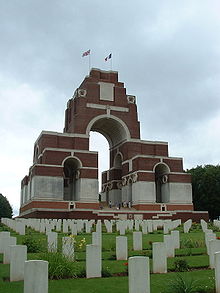
On the Paris - Brussels / London high-speed rail corridor, the region is highly accessible by train.
From Belgium, how quickly you get to the region depends on where you come from. From Brussels, there are plenty of TGV trains going to France, all of which stop at Lille-Europe. If coming from places in western Belgium like Ghent, Tournai, or Kortrijk, there are hourly regional trains to Lille-Flandres. There are also Eurostar trains from London that stop at Lille-Europe en course to Brussels, but they are inconvenient given that you need to go through border controls.
Don't go to Haute-Picardie without assured onward transport; its isolated location has inspired the nickname gare des betteraves ("beetroot station").
Driving from Paris is straightforward; take the A1 and your wallet, and expect to fork out at least €25 for the toll. Motorists from Belgium have it even easier, with physical proximity and the Schengen Agreement both playing their part. Drivers from Britain can load their cars onto a Eurotunnel train in Folkestone , and drive off in Calais 35 minutes later. Alternatively, there are ferry crossings (see below). The A26 is the famous Autoroute des Anglais , which conveys traffic from the ferries and tunnel south into France and the rest of Europe.
For more detail on the region's autoroute system, see Get around below.
Calais is connected to Dover in England by car and passenger ferry services operated by P&O Ferries and DFDS Seaways . DFDS also operate ferries between Dover and Dunkirk . The crossings take a relaxed 1 hr 30 min, and you get to enjoy a view of Britain, France and Belgium all at the same time.

There are two small international airports in the region, though both are targeted at the domestic market.
Failing this, Paris Charles de Gaulle and Brussels are much larger international airports receiving flights from all over the world, including North America. Both are within easy reach of the region, thanks to high-speed rail.
The TGV provides a local high-speed service from Lille, south to Arras and Picardy, and north-west to Calais. The rest of the regional network is provided by TER Hauts-de-France . The entire system is nationalised under the SNCF , so tickets and schedules are easily synchronised.

Hauts-de-France is well-served by motorways ( autoroutes ), with the following being the most useful:
- A1 ( north-south ): Lille , A21, Arras , A26, A2, A29, Chantilly , Parc Astérix, Île-de-France , towards CDG Airport / Paris
- A2 : A1 ( from Paris ), Cambrai, Valenciennes, Belgium , towards Mons as E19
- A16 ( along the coast, then south ): Belgium, from Bruges as E40 , Dunkirk (A25), Calais (A26), Channel Tunnel, Boulogne , Le Touquet / Montreuil , Abbeville , Amiens (A29), Beauvais (N31), Île-de-France, towards Paris
- A21 : A26, Lens , A1, Douai , A2
- A23 : Lille, Valenciennes
- A25 : Lille, Dunkirk (A16)
- A26 ( northwest-southeast ): Calais, A16, Saint-Omer, Lens (A21), Arras, A1, A2, Saint-Quentin, Laon , Grand-Est , towards Reims
- A29 ( west-east ): Normandy , from Rouen , Amiens (A16), A1, Saint-Quentin (A26)
- N31 ( good west-east road in the south of the region ): from Normandy, Rouen , Beauvais (A16), Compiègne, Soissons, Grand-Est, towards Reims
Some of the autoroutes are free, notably the A1 and others around Lille, and the A16 between Boulogne and Belgium. The rest of the network is tolled, operated by the private company SANEF . Away from built up areas, you'll find the roads of northern France very quiet indeed, with far-reaching views over desolate fields.

- Picardy is sometimes claimed to be the home of Gothic architecture , and there is certainly no shortage of buildings to choose from: the cathedrals of Notre Dame d' Amiens and Beauvais are two shining examples, as is the basilica in Saint-Quentin .
- Thiepval - the memorial to the missing of the Somme is monolithic and sombre
- Vimy - The site of the famous World War I battle, now a Canadian National Memorial, just outside Lens .
- See England from Cap Gris-Nez (Audinghen) and Cap Blanc-Nez (Escalles). On a clear day you can see the White Cliffs of Dover, and view the ships on the world's busiest shipping channel, from these points.
- Villers-Bretonneux - The site of the famous battle in World War I, now an Australian National Memorial just outside Amiens .
- Écoust-Saint-Mein - The site of the battle during World War I, nowadays it contains a few British war cemeteries. It was depicted as a destroyed waypoint in the war film 1917 .
- Beaches : the best beaches are along the 40-km (25-mile) stretch of coast from Equihen-Plage in the north to Fort Mahon-Plage in the south. The wide sandy beach is broken only where the Canche and Authie rivers meet the sea. The sea goes out a long way at low tide. The main resort on this coast is Le Touquet , but there are several smaller seaside towns or villages that, depending on their size, offer shops, cafes, a seaside promenade, as well as access to the beach.
- Audomarois marshes , 3, rue du Marais, Clairmarais ( Near St. Omer ), ☏ +33-3-21-39-15-15 . Visit the marshlands near St Omer, with a guided boat tour, or row yourself! The marshes are home to unique flora and fauna and offer a different experience to the usual tourist activities. Great for bird-watchers, lovers of nature and still a relaxing and interesting experience for anyone else! It can get quite cold on the boats. Some tours require booking in advance, see the website. Price varies according to length and type of trip .
- Parc Astérix : a theme park based on the world-famous comic series.

The dish of the region has to be moules frites - a steaming bucket of mussels served with mountains of fries - glorious! Often associated with neighbouring Belgium, it's no surprise they're adored in Hauts-de-France too. The most common variant is moules marinières , which sees the mussels steamed in a white wine, shallot and butter sauce, seasoned with parsley, pepper and garlic. This dish has become so popular, it has spread around France and been given dozens of regional makeovers, trading marinière sauce for cream in Normandy, and rich tomatoes and Mediterranean vegetables in the Provence. But the original recipe is best; perfect for sharing, but so moreish you may not want to.
Another classic dish is the ficelle picarde , an oblong savoury pancake stuffed with ham, emmental or gruyère cheese and mushrooms. Treated as comfort food, you will find it on the menu in restaurants and people's homes.
While you're here, summon your courage and hold your nose to try maroilles , a stinky cows' milk cheese produced in the region. It is an acquired taste, but once done so you can truly say you have experienced the north of France. Besides, it has been made since the 10th century, and was a favourite of four kings of France — if it was good enough for them, why not you? In restaurants, it is served in a chicory salad (often labelled something like salade du Ch'ti ), or else on toast, and in bakeries look out for it in tarts.
Unlike most of France, this area is better known for its beer than wine. Luckily the beer is also amazingly cheap compared to certain other places in Europe. A particular local favourite is "Bière de garde," a type of French pale ale. Other good ones to try are 3 Monts and anything from Brasserie de Clerck. A 1L bottle, which looks like a wine bottle, complete with a cork in it, costs only €2 in a Lille supermarket.
Unlike many former industrial regions around the world, the Hauts-de-France are not particularly dangerous, despite being deeply marred by socio-economic issues caused by the fall of the region's industries. Tourists should feel safe by taking the basic precautions; the vast majority of tourist sites are indeed very safe.
Some areas in and around Lille , Lens , and Valenciennes have their share of insecurity, though this tends to be blown out of proportion and outsiders are not affected. With that said, pickpockets and assaults are not unheard of. Beggars are also a common sight in urban areas, though they rarely act aggressively.
Nowadays many people tend to fear going to Calais due to the migrant crisis. The migrants tend to stick to roads near the Channel Tunnel, where there are shantytowns of tents and makeshift shelters, and rarely venture into the city. Travellers using the Channel Tunnel and particularly those driving vehicles with non-French registration plates are advised to check their vehicle thoroughly before entering the Eurotunnel terminal, as migrants have been known to conceal themselves within vehicles that look like they're bound for Britain in an attempt to enter the country illegally.

- When touring battlefields or belfries, your next port of call should be Belgium . Start in Ypres , which has both, then branch out in any direction you choose! Ride the length of the Belgian coast - all 67 km - on the Kusttram (coast tram), or else soak up Flemish flair and romance in Bruges or Brussels .
- Grand Est beckons to the (great) east. Grand old cities such as Reims and Strasbourg rub shoulders with wild spots in the Ardennes and Vosges. With its knack for mixing Gallic and Germanic cultures, this is one place you can eat sauerkraut and drink champagne all in a day!
- Île de France is just to the south. Paris is of course a must; after all, once you've tasted the Louvre in Lens, it would be silly to miss out the real thing! Venture beyond the capital to hold court in Versailles , hug the trees in Fontainebleau , or even say "bonjour" to Mickey Mouse.
- Normandy ' s D-Day beaches offer a sobering accompaniment to the Somme trenches, but this diverse region has so much more to offer, from the chalk Alabaster Coast, to the hedgerows of the Cotentin Peninsula, and inland river valleys of exceptional beauty.
- Hop across the Dover Straits to South East England . Whether you're on pilgrimage to Canterbury , fancy pottering around the gardens of Kent or Sussex , or just want to catch a Waterloo sunset , be sure to take your passport, as the UK is outside the Schengen Zone . If you're based in France, cross-channel journey times certainly make a day trip feasible.
- If you've just come from England, and the last thing you want to do is go back, follow in the footsteps of millions of continental travellers before you. Hit the Autoroute des Anglais and power south. Where will you go? Burgundy , the Riviera , Venice ? Onwards !
- Pages using the Kartographer extension
- UNESCO World Heritage Sites
- UNESCO tag to be fixed
- Has custom banner
- Has mapframe
- Maps with non-default size
- Has map markers
- Marker with Wikivoyage article but no wikilink
- Do listing with no coordinates
- All destination articles
- Outline regions
- Outline articles
- Region articles
- Bottom-level regions
- Has Geo parameter
Navigation menu
You are using an outdated browser. Please upgrade your browser or activate Google Chrome Frame to improve your experience.
9 places not to miss in Hauts-de-France
Share the love
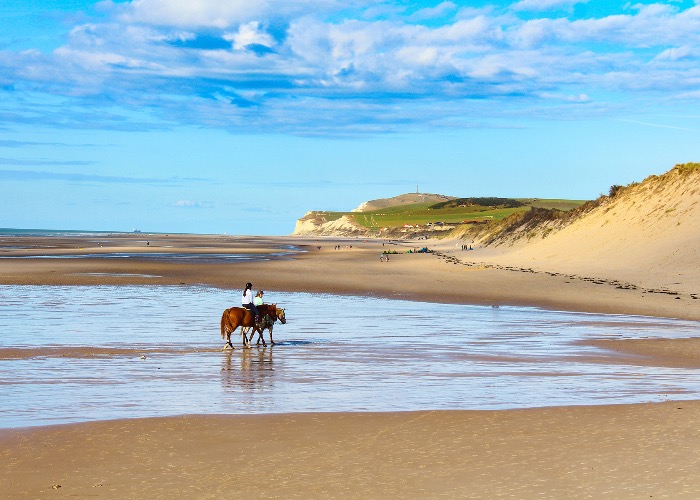
Hauts-de-France is an underrated French region that's awash with medieval architecture, sprawling sand beaches and fine Champagne.
The Hauts-de-France region is home to vibrant cities like Lille, the gorgeous coastline of the Côte d’Opale and an amazingly rich cultural heritage, from UNESCO-listed medieval belfries to the stunning Louvre Lens. There’s stacks of history and a whole slew of architectural gems, including the early Gothic cathedral in Laon and a 16th-century town hall in Arras – yet, with just a few exceptions, it sees far fewer visitors than most other parts of France.
Located in the northeast corner of France and encompassing the departments of Pas-de-Calais, Nord, Aisne, Somme and Oise, this is a hugely rewarding part of the country to visit, whether you’re after beaches, world-class museums, fabulous food, a romantic escape for two, active adventures or a genuinely memorable family holiday. Here are nine must-visit places in the region.
READ MORE: France's most beautiful villages
1. Côte d’Opale
In a country with no shortage of stunning coastline, the Côte d’Opale of Pas-de-Calais and Nord is all too often overlooked – which is a shame, because its gorgeous sandy beaches seem to go on forever and it's got wild dunes, breathtaking cliffs and plenty of history to boot. Anyone who only knows Calais as a cross-Channel ferry port is definitely missing a trick or two too.
The town of Le Touquet has one of the most popular beaches in northern France, its huge Paris Plage a great sweep of pale sand (pictured below). Not so well known is laid-back Étaples-sur-Mer, just across the La Canche inlet, yet the beach is still easy enough to reach by bike, along good cycle lanes.
Cap Gris Nez is the closest part of the French coast to England, and there are stupendous views across the Channel from here, as well as from the 440-foot (134m) high cliffs at Cap Blanc Nez. For impressive areas of sprawling sand dunes, head for Bray-Dunes or Ambleteuse.
Given its location, there are numerous sites associated with the First and Second Word Wars along the Côte d’Opale. The Étaples Military Cemetery is the largest Commonwealth War Graves Commission Cemetery in France, while the Wimereux Communal Cemetery includes the grave of Canadian poet and soldier John McCrae, author of the poem In Flanders Fields .
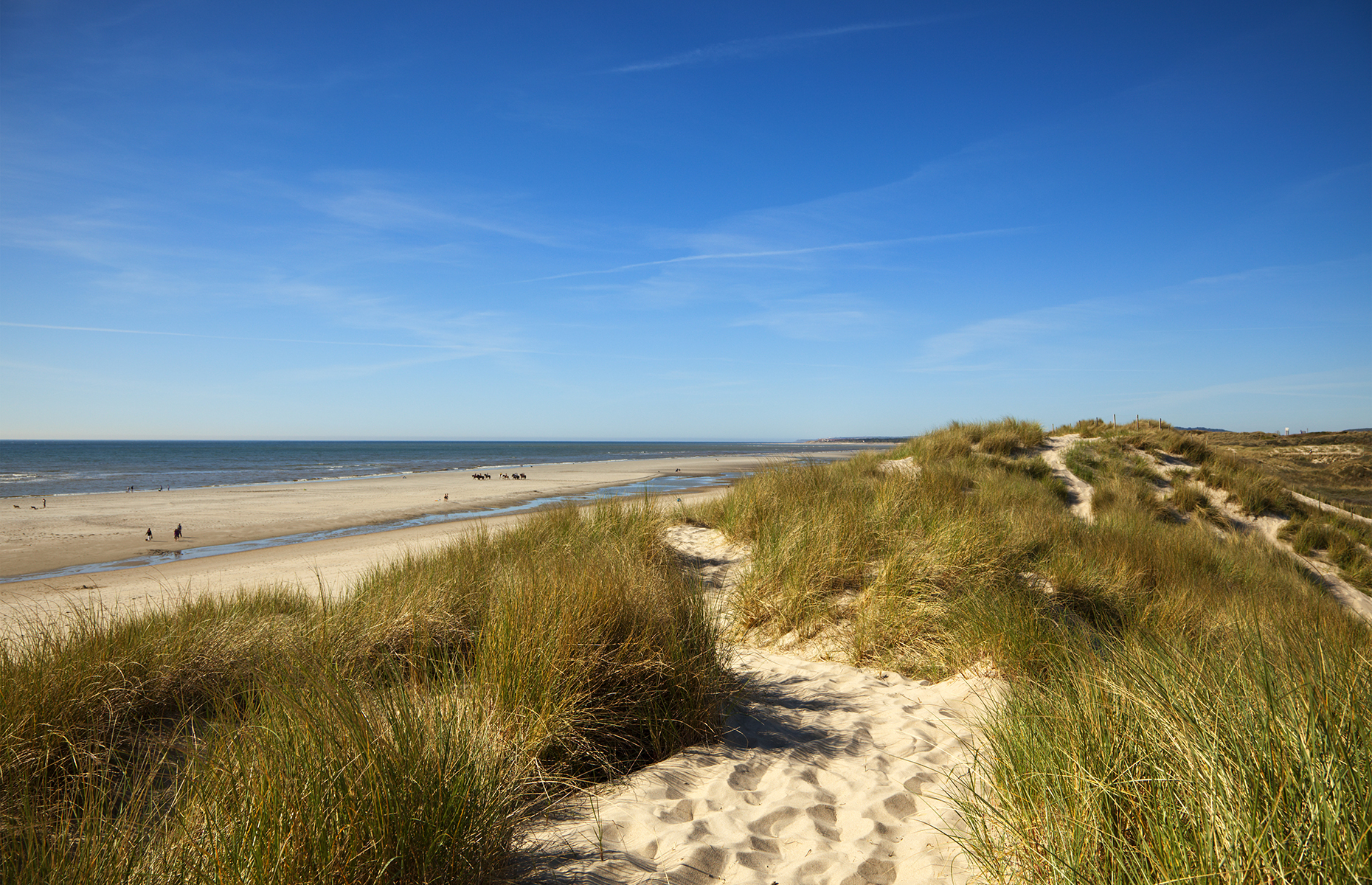
2. Boulogne-sur-Mer
France’s largest fishing port, with some 35,000 tonnes of fish being landed each year, Boulogne-sur-Mer is an ideal base for exploring the Côte d’Opale.
Don’t miss the fortified old town, with its narrow, cobbled streets, UNESCO-listed medieval belfry and stout castle. Standing over all of this is the striking dome of the Basilica of Notre-Dame, built in the 19th century and – rather remarkably – designed by a local priest, who had never built anything before. The crypt is one of the largest in France.
Down on the waterfront, Nausicaá is an impressive aquarium with a staggeringly large tank – the largest in Europe. You only realise its true scale at the end of your visit, when you arrive in front of a 66-foot (20m) by 16-foot (5m) wall of glass, with kaleidoscopic fish, sharks and rays swimming past – including an enormous manta ray, which makes quite an impression as it glides past your nose.
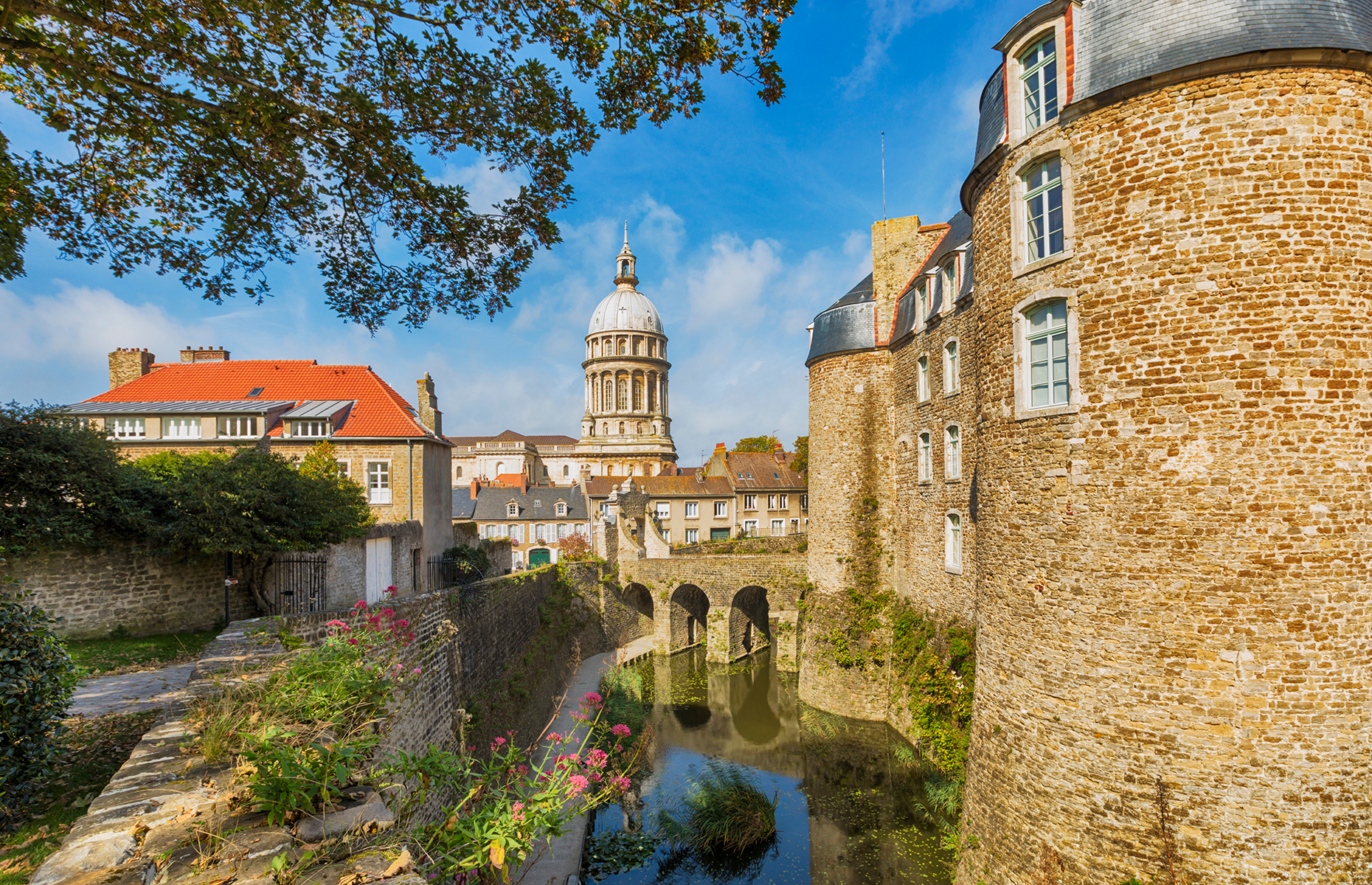
3. Louvre Lens
Located in the small town of Lens at the heart of a former mining region, the Louvre Lens was opened in 2012, with the aim of making some of the Louvre’s priceless collections accessible to a new audience and a different region – and it's worthy of a trip to northern France in itself.
READ MORE: Discover coast and countryside in Northern France
Forget the experience of viewing well-known artworks in the often crowded rooms of the Louvre in Paris, wonderful as those hallowed halls may be – at the Louvre Lens you’ll find more than 200 masterpieces from across the world and spanning several millennia, arranged in one huge space, with plenty of room to breath.
The artworks are arranged chronologically, regardless of their provenance – meaning that you’ll be looking at paintings from, say, Renaissance Italy alongside ceramics from the Ottoman Empire. This gives a whole new dimension to how you see the history and development of art, as part of a wider story rather than in isolation.
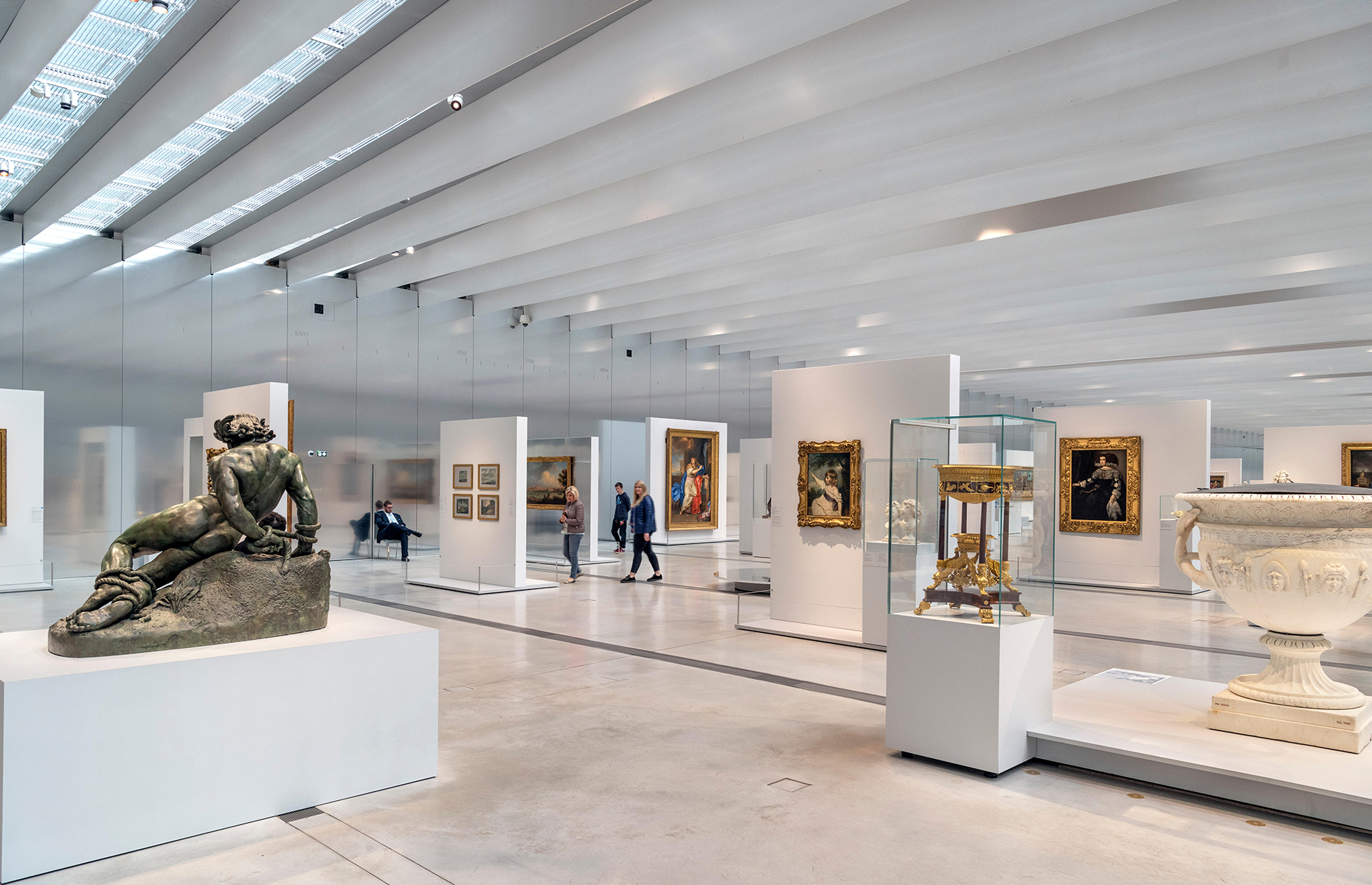
No trip to this part of France is complete without spending some time in Dunkirk (Dunkerque). Learn more about the evacuation of Dunkerque during the Second World War at the Dunkirk 1940 Museum, and don’t miss the excellent LAAC – a dazzling collection of contemporary art, beautifully displayed, including a genuinely breathtaking collection of graphic works.
There are superb views from the top of the UNESCO-listed medieval belfry, and one of the ‘Little Ships’ of Operation Dynamo, the Princess Elizabeth, is moored in the inner harbour, and is now a restaurant. The city’s main beach is a huge swathe of sand, stretching off towards the Belgian border.
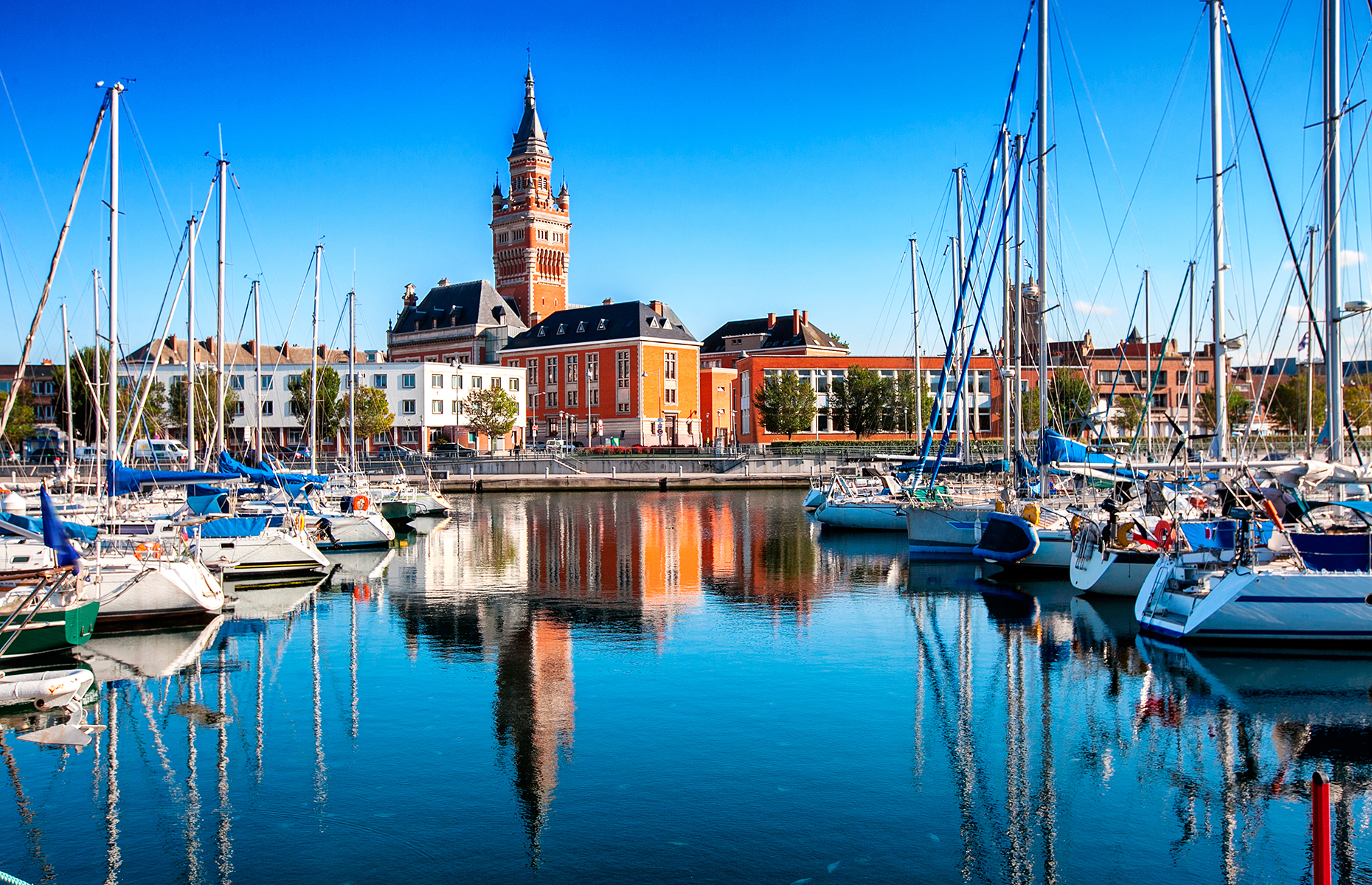
5. Saint-Omer and the Marais Audomarois
Saint-Omer is a lovely little town, just 25 miles (40km) inland from Calais. It’s home to one of the last great Gothic cathedrals built in France, and next door to this the former Palais de la Cathédrale is one of the most interesting historic homes you could hope to visit anywhere; a place which completely breaks down the usual barriers between museum and visitors.
But the real show-stealer is the Marais Audomarois – the vast, sprawling area of wetlands that surrounds it – one of the most extensive in France, criss-crossed by umpteen kilometres of water channels, canals and dykes, and home to an amazing variety of birdlife, as well as a patchwork of small-scale market gardens, of a kind that have largely disappeared elsewhere in France. Take a boat tour on a traditional wooden bacôve (a type of flat-bottomed boat) from Clairmarais or the Maison du Marais .
Saint-Omer also makes a good base for visiting the former V2 rocket launch site La Coupole and Le Blockhaus d’Eperlecques .
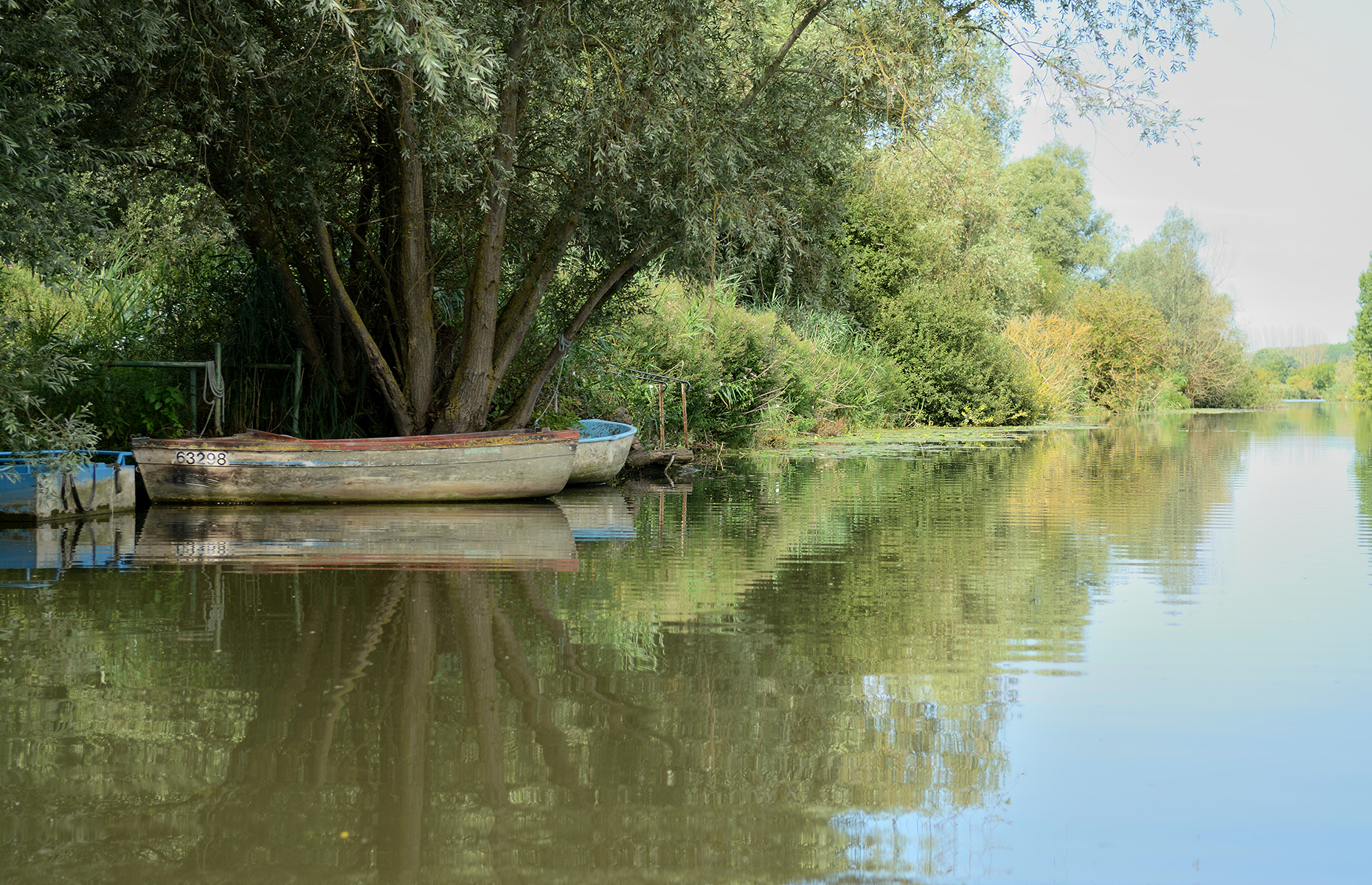
6. Arras
Less well known than Lille, Arras has a beautifully preserved old town centre, at the heart of which are two large main squares, La Grand Place and La Place des Héros (pictured), surrounded by 17th- and 18th-century Flemish townhouses. The amazing 16th-century town hall and belfry stand at one end of La Grand Place – they were almost completely destroyed during the First World War, but rebuilt in the 1920s following the original style as closely as possible.
Join a tour of the Boves – an underground network of tunnels and galleries built from the 9th century onwards, stretching for some 12 miles (20km), around 39 feet (12m) below the city’s cobbled streets and squares.
Arras is home to the largest Christmas market in northern France and there’s also a massive citadel built by Vauban. These days Arras hosts the annual Main Square Festival at the beginning of July.
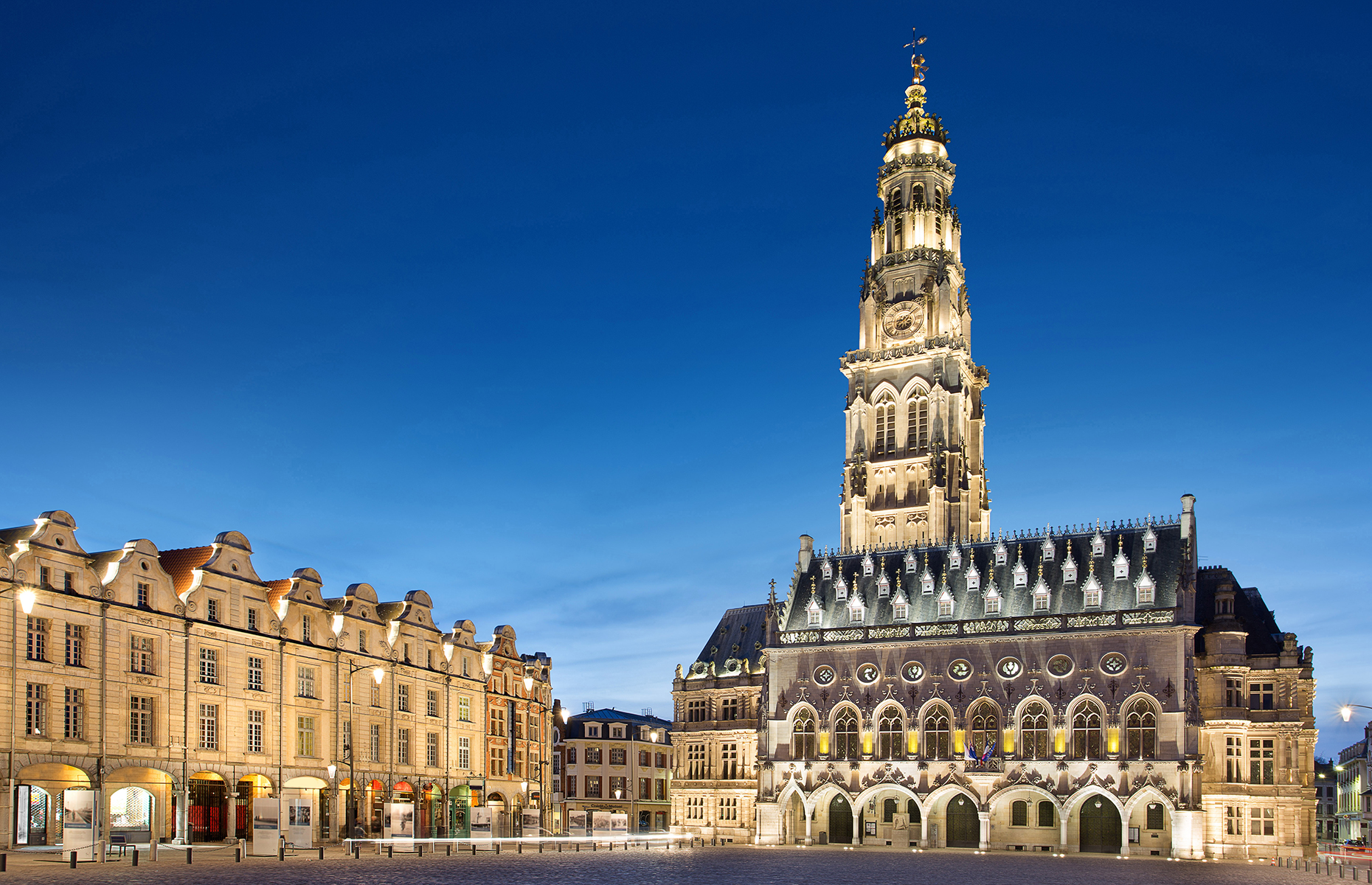
7. Baie de Somme
The Baie de Somme is a huge estuary – a landscape of salt meadows and marshes, sand dunes and forest, which forms a fantastically rich habitat for birdlife. It’s one of France’s top spots for bird watching, particularly during the spring migration – more than 300 species of bird have been recorded here – and you can also see harbour seals and grey seals (it’s home to the largest seal colony in France).
The Baie du Somme is perfect for exploring on two wheels or by canoe, or on the network of walking trails – or come in April for the Bird and Nature Festival and enjoy guided nature excursions with expert guides, including crossings of the bay on foot at low tide.
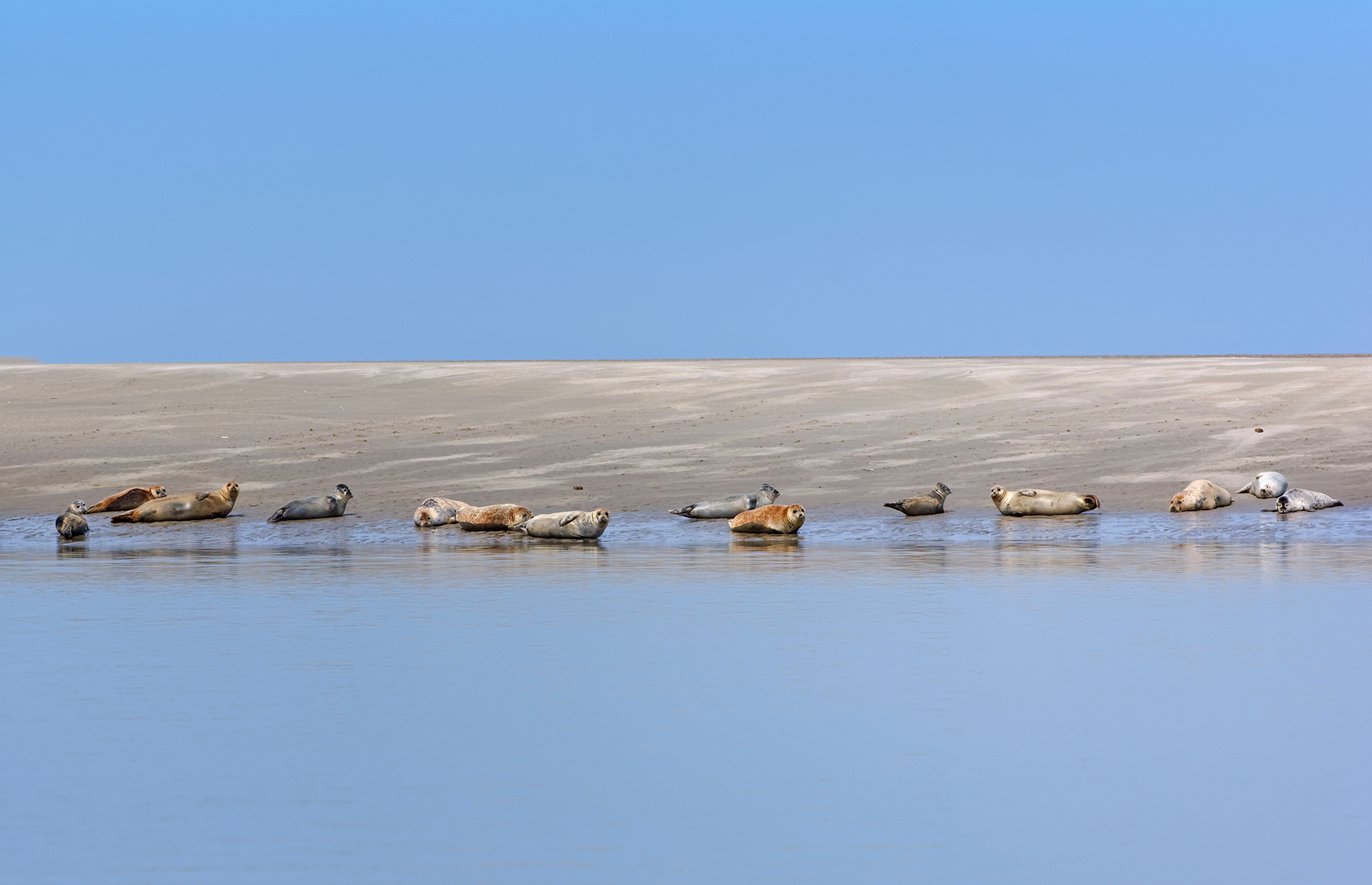
8. Laon
The exquisitely beautiful city of Laon in Aisne is one of those places that it’s almost impossible not to fall in love with – its hilltop setting means it stands like a beacon above the surrounding landscape, earning it the nickname "La Montagne Couronnée" ("The Crowned Mountain").
It's the former Carolingian capital and its walled old town centre comprises the largest single area of protected monuments in France – yes, even bigger than Versailles. The cathedral is particularly beautiful and one of the finest examples of early Gothic architecture in France. The large 13th-century rosette window of the north transept is highly unusual, depicting different aspects of science and knowledge rather than religious subjects – and gives an indication of just how much of an important centre of learning Laon was during this period.
Beneath the city lies a labyrinth of passageways and catacombs, reaching down four levels in places – the limestone used to build the city was quarried from directly below it, and below this limestone lies a bed of sand which was also quarried. Guided tours can be booked at the Tourist Information Office (there’s a genuine risk of getting lost, so visiting with a guide is mandatory).

9. Champagne in the Aisne
When people think of Champagne, it’s generally the big houses around Épernay and Reims in the Marne department which come to mind. But 10% of the AOC Champagne region lies within the Aisne department, stretching along the Marne Valley to the east of Château-Thierry and associated in particular with the Meunier grape.
While the quality of Champagne in the Aisne region is every bit as good (and under the same rigorous controls) as the rest of the Champagne region, you can expect fewer people here and lower prices for top notch bubbly – what’s not to like? There are some 36 villages in the Aisne portion of the Champagne AOC, with two standout producers being Pannier and Météyer .
View this post on Instagram A post shared by Champagne PANNIER (@champagnepannier)
READ MORE: Time travel in France – the country's most historic attractions
Lead image: MisterStock/Shutterstock
Be the first to comment
Do you want to comment on this article? You need to be signed in for this feature
Copyright © loveexploring.com All rights reserved.
National Geographic content straight to your inbox—sign up for our popular newsletters here
Frites, cockles and cheese—the best things to eat in Hauts-de-France
The sandy bays, marshy rivers and web of canals woven through this region between Paris and Calais offer rich pickings, from crab and samphire to smoked herring, all perfect with the local frites.

As I sit on Calais’ golden beachfront, eating from a bag of deliciously hot frites, it strikes me that it’s a shame so many travellers dash past this northernmost region of France, heading to the south. But those who pause a while will reap great culinary rewards.
Hauts-de-France — stretching from Calais to the edge of Paris — is famed for its excellent frites, sold from mobile trailers and cabins known as friteries. But it’s also replete with seafood, samphire and many other sea vegetables, plus an array of cheese, macarons and Chantilly cream, to name just a few notable specialities.
From Calais, I follow the undulating coastal road north west to Boulogne-sur-Mer. As France’s biggest fishing port, it doesn’t have the bucolic charm of, say, Brittany or Corsica’s fishing villages, but it’s fascinating to see a place that handles over 300,000 tonnes of fish and shellfish a year. Away from the old town, with its immaculately preserved medieval citadel and impressive street art murals, the fishing district is lined with brine-scented warehouses and a vast wholesale market, La Criée, where seagulls caw overhead.

I miss seeing La Criée in full throttle, its busiest time during the early hours when fishing vessels return with their catch. By the time I call in for lunch at Le Chatillon, the area is quiet and the restaurant’s fisherfolk regulars are long gone after their post-shift meal, taken when most people are still eating breakfast. The dining room is decorated like the deck of a ship, complete with porthole-shaped mirrors on the walls. I order turbot, delicate and light and served with the region’s ubiquitous frites, which are both crunchy and indulgently fat and floppy.
At Le Crotoy, 45 miles south along the coast, where the River Somme meets the sea, there’s a different product on the menu. The seaside plant samphire, salicorne in French, grows in abundance on the banks of the river, but so too do other plants that I’ve never heard of before — sea vegetables that are just as tasty. I join local forager Reinette Michon, known as a ‘pecheuse à pied’ as she fishes on foot. She first started learning how to find cockles, worms for bait and various sea vegetables as a child. Now in her sixties, she’s president of the Association of Samphire Collectors, which issues licences to the few dozen people allowed to gather the plant here during the summer months, many selling them, as Reinette does, to restaurants and fishmongers.
Our tour starts from Phare du Hourdel, a lighthouse on the opposite side of the estuary from Le Crotoy. She kits me out with giant wellies from her sand-splattered van and, before long, I’m following her down from the quayside, squelching through the ankle-deep muddy sand and scrambling up the opposite grassy bank as a strong breeze tangles my hair. We’re soon kneeling next to a feathery plant Reinette calls le pompon, which she cuts with her knife and places in a large bucket. “This one’s like samphire,” she says. “It’s lighter and finer, and really nice if you toss it in butter and add to new potatoes.” Next is l’obione, a large, almond-shaped leaf. “This one you can use like you would nori for sushi,” says Reinette. “You dry it in the oven for an hour and it crisps up.”
I ask her how these plants came to be part of the local diet. “The poor have always eaten them, but in the 1960s and 1970s, the Dutch came along the coast to forage, as they were very fond of these plants. The added demand led to the need for licences to ensure the plants were protected,” she says. The final quarry on our foraging mission is sea aster, also known as les oreilles de cochon — pig’s ears. Reinette shows me how to measure the leaves on the palm of my hand — if they fit within it, they’re worth picking, but any longer and they get stringy. She suggests frying them like spinach with crushed garlic, stirring in some creme fraiche and serving them as a side dish, perhaps with a pork chop.
When we return to her van, Reinette hands me a bag full of the foraged plants to cook with later. But before I do that, I get the chance to try them at Auberge de la Marine, where chef Pascal Lefebvre weaves them into his dishes.
A starter of tiny cockles in a light broth topped with crunchy samphire is followed by the Bay of Somme’s flavoursome new potatoes, perfectly seasoned to complement the salt marsh lamb.

Some 45 miles inland, the Somme flows through the city of Amiens, where it weaves its way around a 740-acre patchwork of islands known as Les Hortillonnages. The canals that run between them are popular to navigate on either a guided cruise or in a kayak rented from a waterside outlet. This offers the chance to paddle around the islands at leisure, hopping off here and there to explore their sculpture trails and admire the ‘floating’ gardens, which are at their best in summer.
I make a detour into the city to pick up a box of macarons from chocolatier and confectioner, Jean Trogneux. Made with fine slivers of Valencia almonds, egg whites and almond oil, Amiens macarons are very different to their colourful Parisian counterparts made famous by the likes of Pierre Hermé and Ladurée. Indeed, their dense texture and moistness make them more similar to coconut macaroons, and they’re made to a recipe handed down through six generations of the Trogneux family.
The alluring shop — windows are stacked high with ribbon-wrapped boxes and jewel-like confectionary — sits on the same spot as the original maison, built in 1872 and flattened during the Second World War. Here, I meet current boss, Jean-Baptiste Trogneux. He tells me how macarons first came to France. “We think they were created in Italy, as a byproduct of macaroni, which uses the egg yolk,” he says. “Then, it’s believed that Catherine de Medici brought them to France in the 16th century, and they’ve been adopted in different forms across the country — there must be about 20 different kinds.” When I peel off the macaron’s gold paper and bite into one, I discover they’re sweet but not overly so, and thus a second is impossible to resist.

Another town in the region known for its sweet speciality is Chantilly, a further 90 minutes’ drive inland, closer to Paris. The town’s eponymous whipped and sweetened cream is served atop crepes, apple tarts, chocolate mousses and many other desserts throughout France. It’s thought to have been made famous by 18th-century Italian chef Procopio Cutó, who may have come to the elegant Chateau de Chantilly as a guest chef. Certainly, the area was famous for its Montmorency cherries, which pair perfectly with the cream as a topping. My visit to the chateau, now a sprawling historic estate complete with copious turrets, a moat and museum, finishes at a small hamlet in the grounds, where I’m served a plate of fat raspberries and cream, house-style. Here, they whip their Chantilly using unpasteurised cream, which must be served within hours of being made and has a slight tanginess — the perfect match for the tart raspberries.
Later, in the town, I visit L’Atelier de la Chantilly, where owner Bertrand Alaime teaches visitors how to whip up their own Chantilly cream. With my balloon whisk at the ready, he pours in a carton of 35% fat cream — in British terms, this would be equal parts single and double cream — and soon my arms are getting a good workout. As it starts to thicken, we add in caster and icing sugars and vanilla powder and keep whipping until the whisk can stand up in the bowl on its own. Bertrand then hands me a spoon and I take a mouthful. Silky and rich, it’s better than any Chantilly I’ve ever tasted, so good I wish I could be left to lick every last scrap off the bowl. Better still, he gives me two big pots to take away, which I eat with Mirabelle plums for the next few meals. They're a tangible reminder of the unexpected culinary delights I found across the Hauts-de-France. From frites to fish, samphire to cockles, macarons to cream, there’s every reason to cross the Channel and linger a while.
Related Topics
- FOOD TOURISM
- SHORT TRIPS
You May Also Like

Why Pas de Calais is France's new fine dining destination

In France's highlands, the flowers are tasty and the cheese is stretchy
Become a subscriber and support our award-winning editorial features, videos, photography, and much more..
For as little as $2/mo.

Europe's best gourmet getaways

Why Sorrento should be your next Italian gastronomic getaway

6 canal-boating trips in the UK for families

How to plan a food trip through the Ribble Valley, UK

A taste of Belgium, from medieval spices to oral cooking traditions
- Best of the World
- Environment
- Paid Content
History & Culture
- History & Culture
- Out of Eden Walk
- Mind, Body, Wonder
- Terms of Use
- Privacy Policy
- Your US State Privacy Rights
- Children's Online Privacy Policy
- Interest-Based Ads
- About Nielsen Measurement
- Do Not Sell or Share My Personal Information
- Nat Geo Home
- Attend a Live Event
- Book a Trip
- Inspire Your Kids
- Shop Nat Geo
- Visit the D.C. Museum
- Learn About Our Impact
- Support Our Mission
- Advertise With Us
- Customer Service
- Renew Subscription
- Manage Your Subscription
- Work at Nat Geo
- Sign Up for Our Newsletters
- Contribute to Protect the Planet
Copyright © 1996-2015 National Geographic Society Copyright © 2015-2024 National Geographic Partners, LLC. All rights reserved

- With the kids
- Things to do
Families – we love you here in Hauts-de-France! The youngest region of France has many strings to its bow when it comes to entertaining and developing the bodies and minds of young ones. You can choose from a vast array of activities based on how you feel – choose something gentle and relaxed, something rejuvenating or something fun. The only thing that really matters is creating great memories that your family can cherish.
Having fun together
There is something for all ages, from lively escapades on endless beaches to a memorable ride on the back of a dragon or adventures high in the treetops on monkey bridges. Or you could visit a farm full of animals, put your head in the stars or visit the Asterix park. From toddlers to teenagers, this region has a thousand and one ways to help you enjoy sweet moments, sporty challenges and fits of laughter. Make your dreams come true!

Learning made fun
Learning is easier when you’re having fun – the kids love it and so do parents. As we know, we never stop learning – regardless of our age. Take your curious little ones – even babies – to discover the Louvre-Lens museum, to be amazed at the giant Nausicàa aquarium, to watch the birds in Parc du Marquenterre or to explore Château de Condé. Make the most of these opportunities to learn in a fun environment – share and grow together.

Subscribe to our newsletter to receive inspiration

Make time for a family weekend away. A chance for parents to relax and for kids to have fun with playful activities in the open air: cycling, beach-yachting along the coast, surfing, treetop adventures and much more. Find out more: www.french-weekendbreaks.co.uk
Family friendly visits
You'll also like.
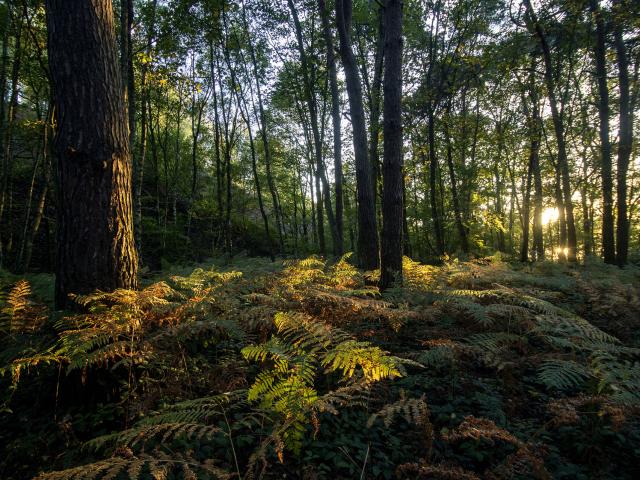

IMAGES
COMMENTS
Discover best places to visit in Hauts-de-France: nice towns and picturesque villages such as Lille, Montreuil-sur-Mer, Dunkirk, Arras, Chantilly near. Noyon_Cathédrale Notre-Dame©CRTC Hauts-de-France - Nicolas Bryant
Top Attractions in Hauts-de-France. These rankings are informed by Tripadvisor data—we consider traveler reviews, ratings, number of page views, and user location. 1. Parc Asterix. Child-friendly theme park based on the cartoon character Asterix the Gaul, who explores French history with humor. 2. Nausicaá.
One of the best places to visit in Hauts-de-France for nature lovers, it consists of 41% beech, 27% oak, 9% charms, and 7% pine, and it is crossed by 900 kilometers of geometric paths. Since medieval times, Compiègne was the favorite hunting ground of the French kings and later the French aristocracy under Napoleon III.
Get news and updates on what's on in Hauts-de-France region along with our selection of handpicked week-end offers just across the Channel. Explore the richness of Hauts-de-France region between Calais and Paris. An invigorating change of scenery and a relaxing break is just a step ahead.
Top Attractions in Hauts-de-France. These rankings are informed by Tripadvisor data—we consider traveller reviews, ratings, number of page views, and user location. 1. Parc Asterix. Child-friendly theme park based on the cartoon character Asterix the Gaul, who explores French history with humor. 2. Nausicaá.
Things to do in Hauts-de-France | Hauts-de-France Tourism - Official Website. Roubaix famille se promenant dans le Parc Barbieux un jour d'automne. Roubaix Hauts-de-France Nord famille promenade Parc Barbieux automne. Things to do.
Top Things to Do in Hauts-de-France, France: See Tripadvisor's 1,328,887 traveller reviews and photos of Hauts-de-France tourist attractions. Find what to do today, this weekend, or in July. We have reviews of the best places to see in Hauts-de-France. Visit top-rated & must-see attractions.
Top Things to Do in Hauts-de-France, France: See Tripadvisor's 1,332,473 traveller reviews and photos of 4,151 things to do when in Hauts-de-France.
Things to Do in Hauts-de-France, France: See Tripadvisor's 1,321,023 traveller reviews and photos of Hauts-de-France tourist attractions. Find what to do today, this weekend, or in August. We have reviews of the best places to see in Hauts-de-France. Visit top-rated & must-see attractions.
Tourism, holidays & weekends in Hauts-de-France. A welcoming and authentic land that combines nature, culture and traditions, the Hauts-de-France region offers its visitors a wide range of sightseeing opportunities and activities. When it comes to countryside, a variety of landscapes await you there, ranging from forests, hedged farmlands and ...
Gillian Thornton gives a quick guide to 12 cultural experiences that you won't want to miss in Hauts-de-France. Note: This article is part of a bigger magazine feature called "Departments of Culture: Hauts-de-France". Created in 2014, the region of Hauts-de-France is the third most populous region in France, encompassing the départements of Aisne, Nord, Oise, Pas-de-Calais, and Somme.
Hauts-de-France Landmarks. 1. Vieux-Lille. Quaint old quarter, cobbled streets, wide variety of shops, restaurants & interesting architecture. 2. Cathedrale Notre-Dame d'Amiens. As well as the sheer scale it has a unique set of carvings about the lives of St Firmin and St John the Baptist aroun...
Incredibly a first edition Shakespeare worth millions was discovered here recently, which gives an indication of just how special this place is. Info: Saint Omer Tourist Office. We visit 4 top towns in Hauts de France, Arras, Montreuil-sur-Mer, Boulogne-sur-Mer and Saint Omer are truly spectacular.
At ease with yourself, with others, with the planet. Northern France, Saint Valery sur Somme, Echappée en Baie hotel. Hotel staff talking to just arrived couple of travelers. Explore Hauts-de-France's best-loved towns: Lille, Amiens, Arras, Beauvais, Laon and discover many treasures.
10. Palais des Beaux-Arts de Lille. 1,909. Art Museums. Prestigious art museum features works of Goya, Donatello and Veronese along with German paintings and sculptures from the 15th and 16th centuries. See ways to experience (13) 2024. 11. Cap Blanc-Nez.
Places to visit in Hauts de France: Pas-de-Calais. This department has the towns of Calais, Boulogne-sur-mer, Lens, Arras and Saint Omer (which is known for its beer) and has the most touristy things to do (that's my own personal opinion). This is the part of France I fell in love with.
6. Over 4,000 m² dedicated to art from the 20th and 21st centuries, in the suburbs of Lille. Favourite. Itinerary. Discoveries. See more results. 21 000 holiday ideas. 58 000 establishments listed. Discover the most beautiful tourist destinations in Hauts-de-France.
The Aqualud is a French water park opened in 1985 in Touquet-Paris-Plage in the Hauts-de-France. The building is in the form of a pyramid which contains the Grand Canyon, Magic River, Black Hole, the twister and so more. It was one of the largest amusement park in northern France which is accessible to both the youngest and adults.
150. Parks • Hiking Trails. By kla2015. Excellent walk through the dunes and on the beach. Fine sand, very clean, and with a bit of luck you can see seals... 94. Les Etangs De Commelles. 153. Bodies of Water.
The Hauts-de-France is a welcoming region steeped in history, with a beautiful coastal area opening onto the North Sea and the English Channel. Located between Paris, Brussels and London, it's a cultural destination par excellence. It offers some beautiful historic centres, including the beautifully restored old Lille (Vieux-Lille), as well as many listed monuments, such as the majestic ...
Hauts-de-France (Upper France) (Picard: Heuts-d'Franche) is the northernmost region of France, located to the north of the French capital Paris and situated on the English Channel at the point closest to England.The region also fronts much of the French border with Belgium.The area is sadly known for its central part in the trench warfare of the First World War (1914-1918), perhaps most ...
5 good reasons to visit. Reason n°1. It's easy to visit - only a 90-minutes direct train journey from London. Reason n°2. Le Palais des Beaux-Arts and Les Maisons Folies for culture and art. Reason n°3. Warm and friendly streets brimming with lively restaurants, cafés and designers from Hauts-de-France. Reason n°4.
Oliver Hoffmann/Shutterstock. 2. Boulogne-sur-Mer. France's largest fishing port, with some 35,000 tonnes of fish being landed each year, Boulogne-sur-Mer is an ideal base for exploring the Côte d'Opale. Don't miss the fortified old town, with its narrow, cobbled streets, UNESCO-listed medieval belfry and stout castle.
Frites, cockles and cheese—the best things to eat in Hauts-de-France. The sandy bays, marshy rivers and web of canals woven through this region between Paris and Calais offer rich pickings, from ...
for your next short break across the Channel. Make time for a family weekend away. A chance for parents to relax and for kids to have fun with playful activities in the open air: cycling, beach-yachting along the coast, surfing, treetop adventures and much more. Find out more: www.french-weekendbreaks.co.uk.